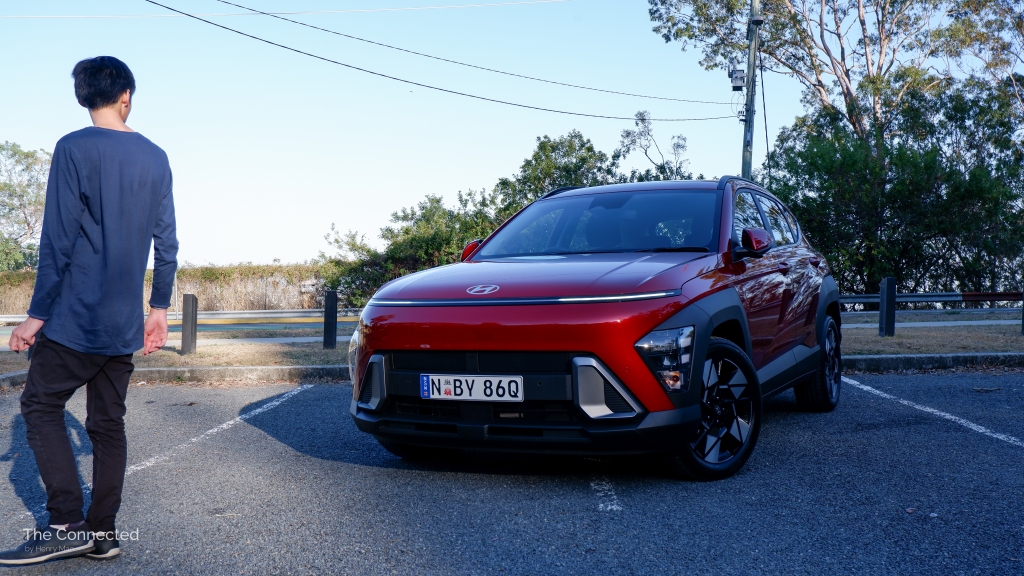The second-generation Hyundai Kona has grown up. But, with a $5100 higher entry price, is the popular small SUV still worth considering?
It’s the typical new-generation move with a higher asking price, more standard features, and a larger size.
The small SUV is also offered with a fuel-efficient hybrid powertrain and N Line package options for the first time in Australia.
Now starting from around $36K drive-away, I tested the cheapest new Kona available to find out whether it’s still good value amid a sea of other small SUV options.
EDITOR’S NOTE: The press vehicle was provided by Hyundai Australia for a seven-day independent evaluation. No copy approval was given before publication and we have no commercial arrangements with the company.


Pros.
+ Excellent value, only $1000 price rise
+ Practical interior
+ Cool looks for base model
Cons.
– Basic interior won’t suit everyone
– Questionable 12V battery placement
– Firmer, noisier ride
Vehicle tested:
| Model & Variant | 2024 Hyundai Kona 2.0L |
| Starting price | $32,000 before on-road costs |
| Country made | South Korea |
| Power / torque | 110kW / 180Nm |
| Drive Type | FWD |
| Claimed driving range (combined) | 712km |
| Claimed fuel efficiency (combined) | 6.6L/100km |
| Fuel tank | 47 litres (minumum 91RON) |
| Boot space (min / rear seats folded) | 407 / 1241-litres |
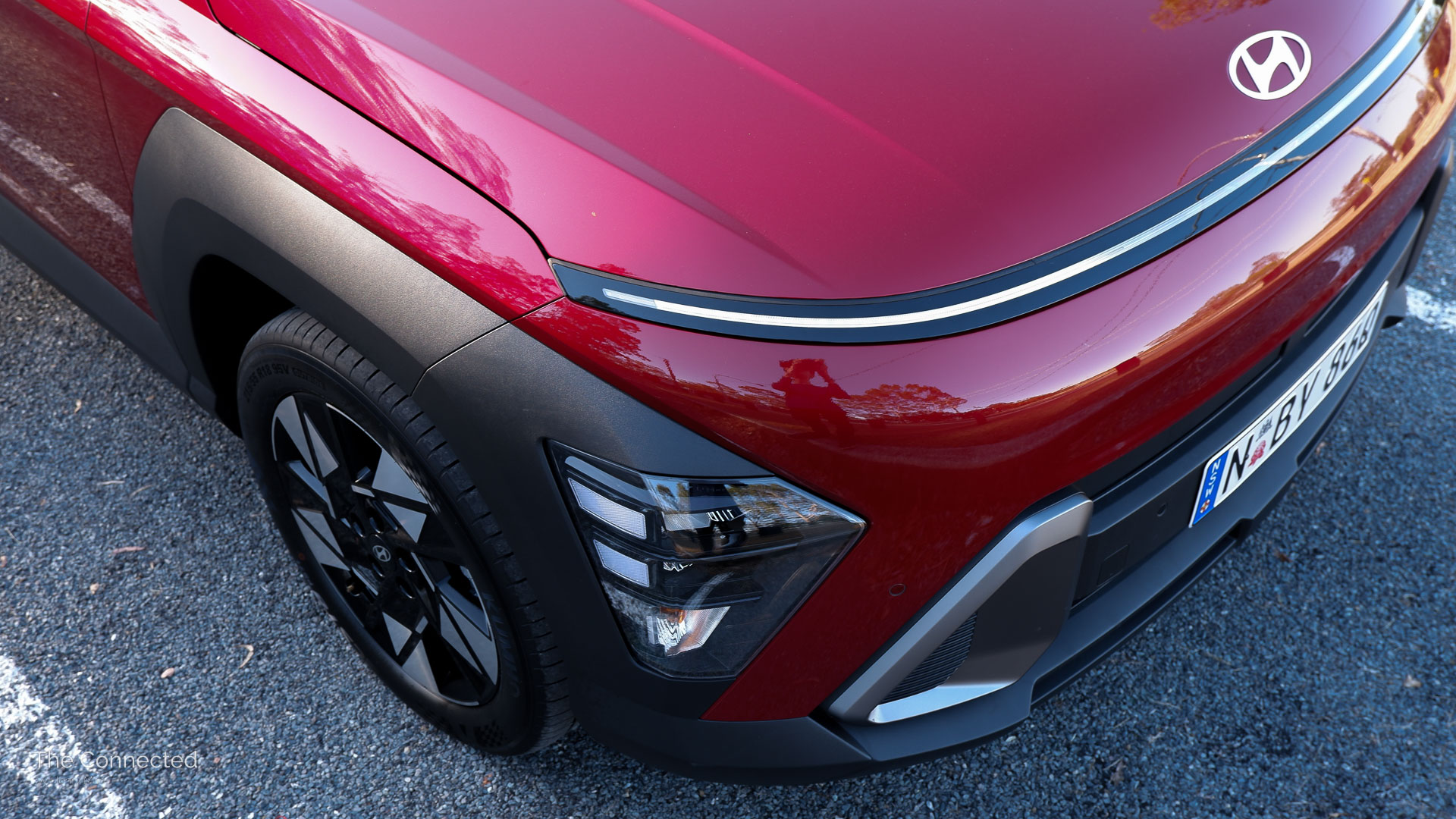
Best value.
The entry-level Hyundai Kona variant represents the best value model, with all the essential features as standard and a sufficient powertrain.
Despite being $5100 more expensive to enter into the South Korean small SUV than before, the base variant is now packed with more inclusions. Therefore, it’s comparable to the previous generation mid-spec Elite variant, which means the actual price premium is only a mere $100.
Outside, it doesn’t look like a base model with its 18-inch alloy wheels (in the same design as the top-spec Premium) full-width rear LED light bar and daytime running lights, and flowing satin chrome line (which flows from the windows to spoiler) maintain its futuristic and robotic Iron Man-esque look from the previous model.
Only the Premium and N Line package lights up the entire front ‘Seamless Horizon Lamp’ strip at night and features projector-type LED headlights (instead of reflectors) with LED turning indicators.
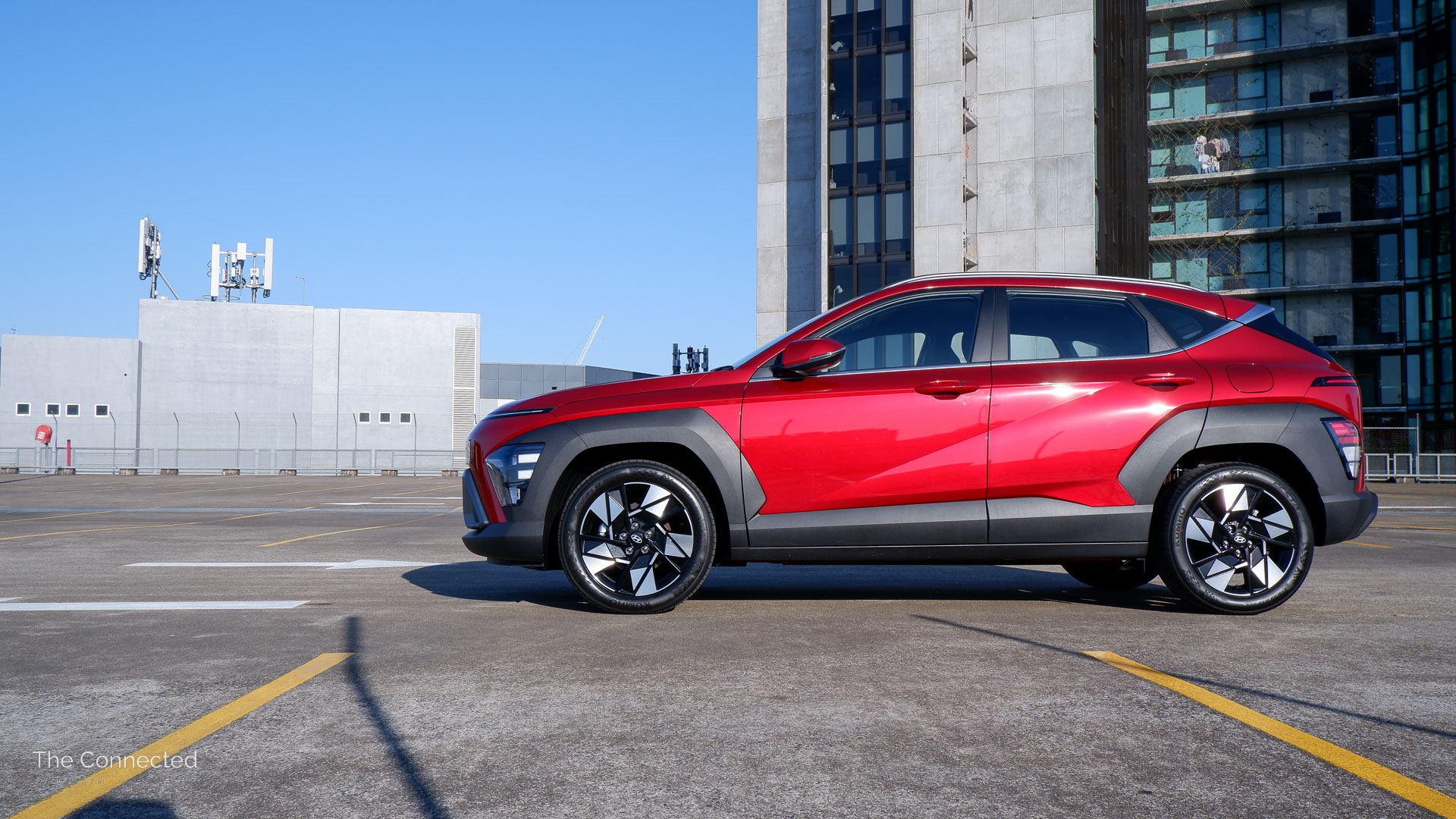
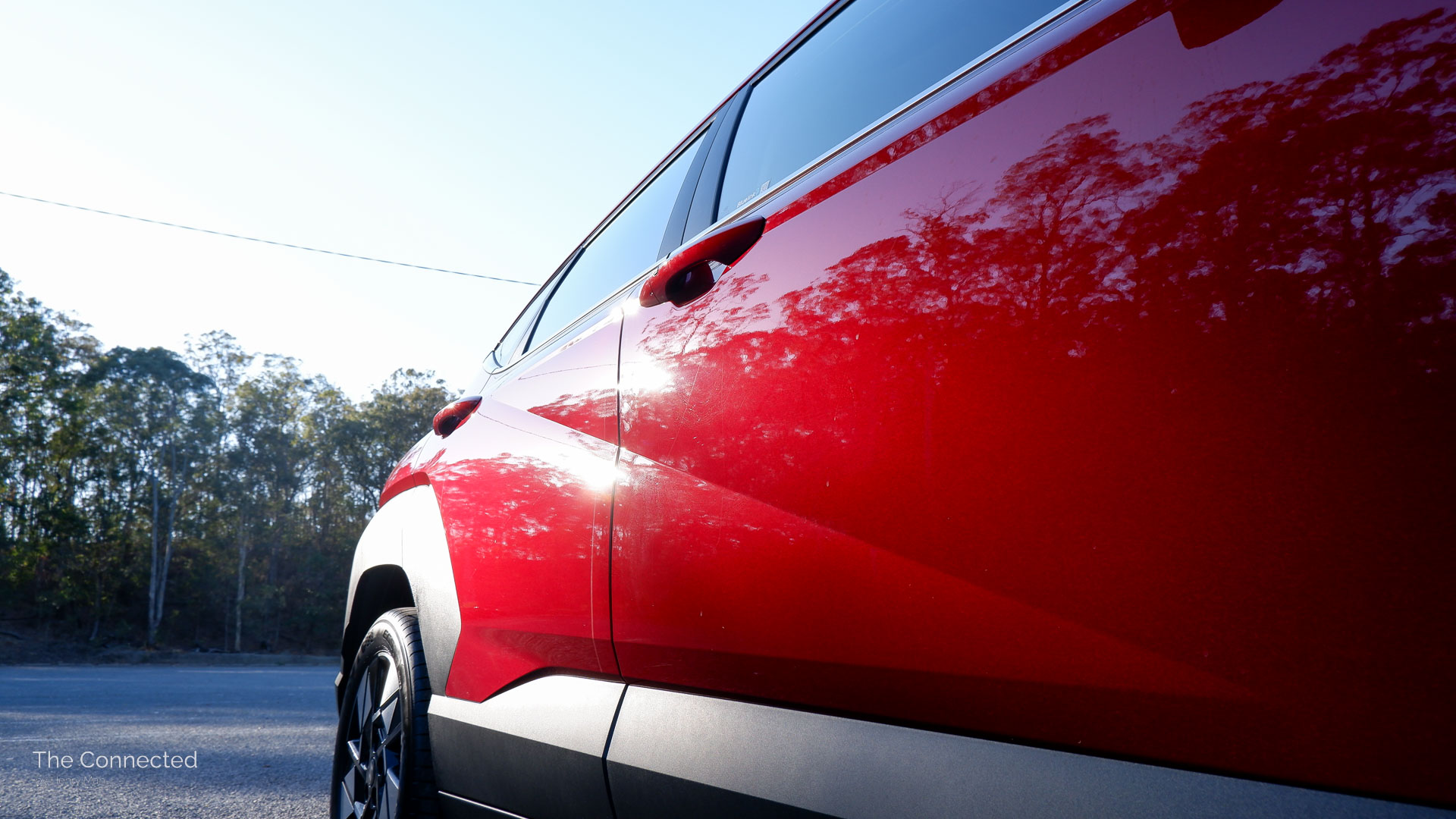
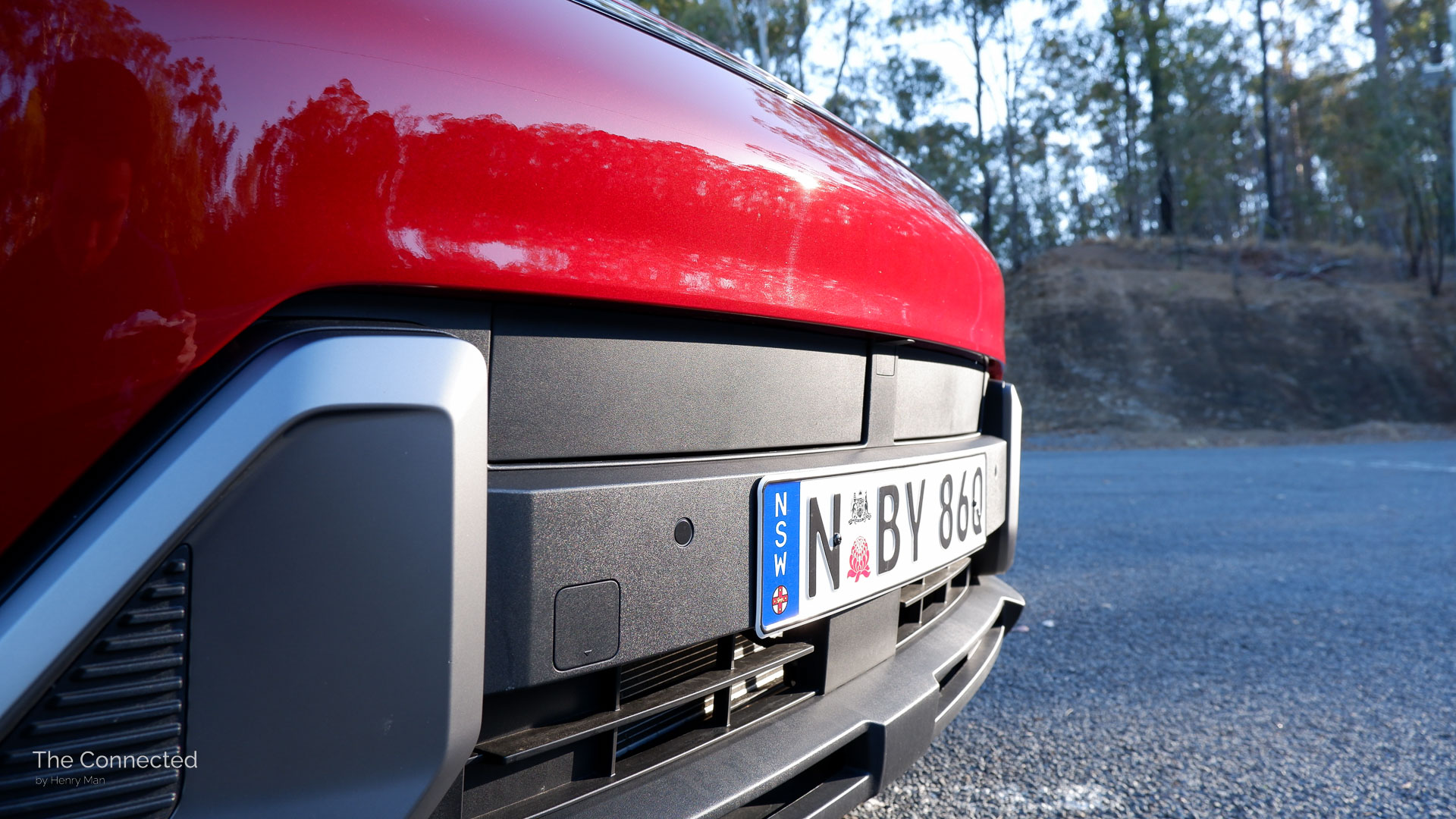
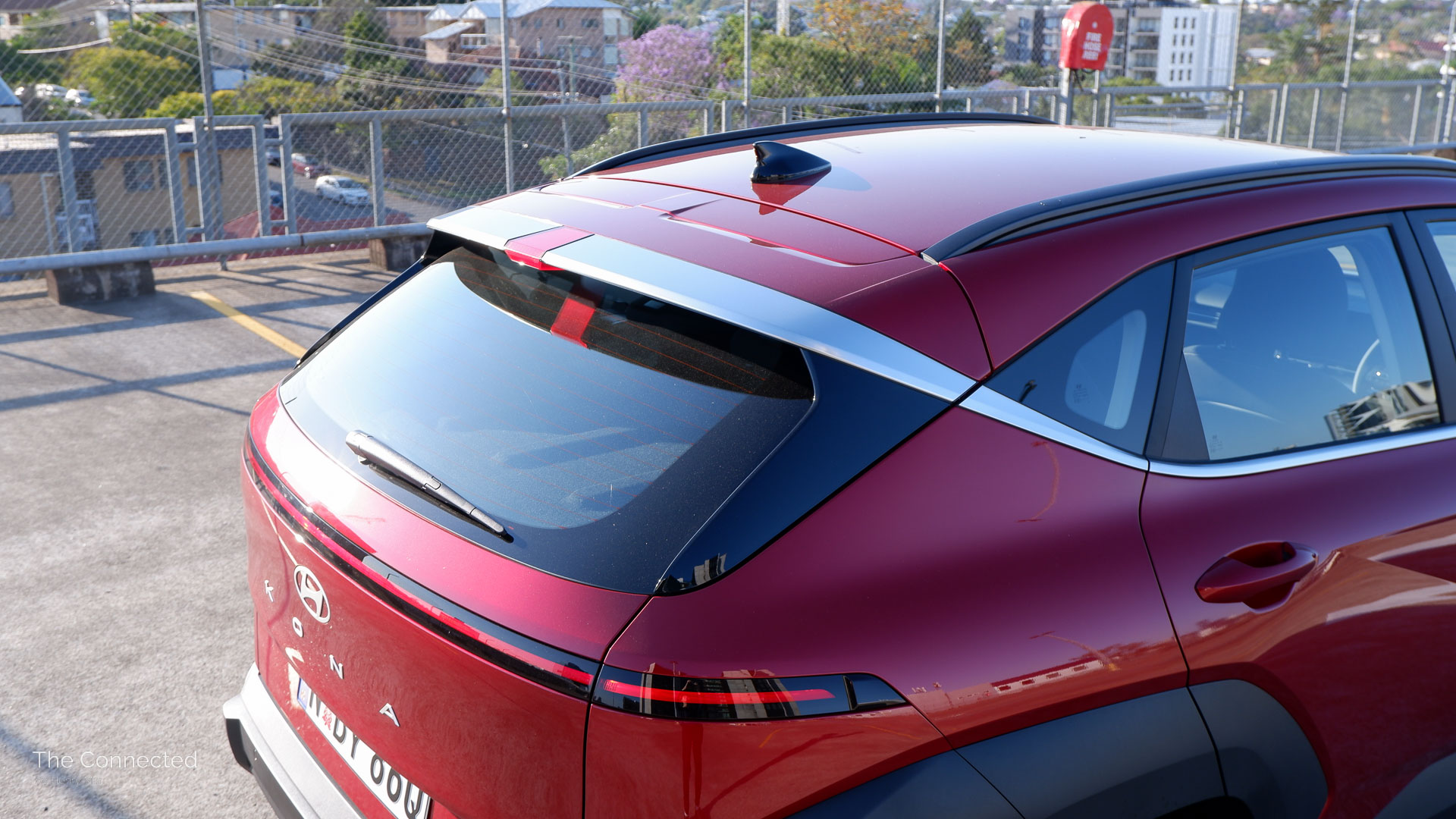
The sizable angular-shaped plastic cladding subjectively looks more tasteful and adds to its rugged SUV design similar to the Subaru Outback wagon, rather than the rounded arches on the Mazda CX-30 small SUV.
Hyundai claims the new-gen Kona was designed as an electric vehicle first, then adapted to a traditional internal combustion engine vehicle. This is most apparent at the front with a grille-free face and automatically-opening louvres to provide passive engine cooling. It’s a sign of the times.
Unlike its Kia Seltos counterpart – which sits on the older ‘K2’ platform – the new Kona features LED reflector-type headlights, a large 12.3-inch touchscreen, Bluelink connected services, and a full suite of well-calibrated active safety assistance technologies as standard.
The standard 2.0-litre four-cylinder petrol engine produces enough power for everyday urban and suburban commutes, and the continuously variable transmission (CVT) provides prompt response to throttle inputs to get up to speed reasonably quickly.
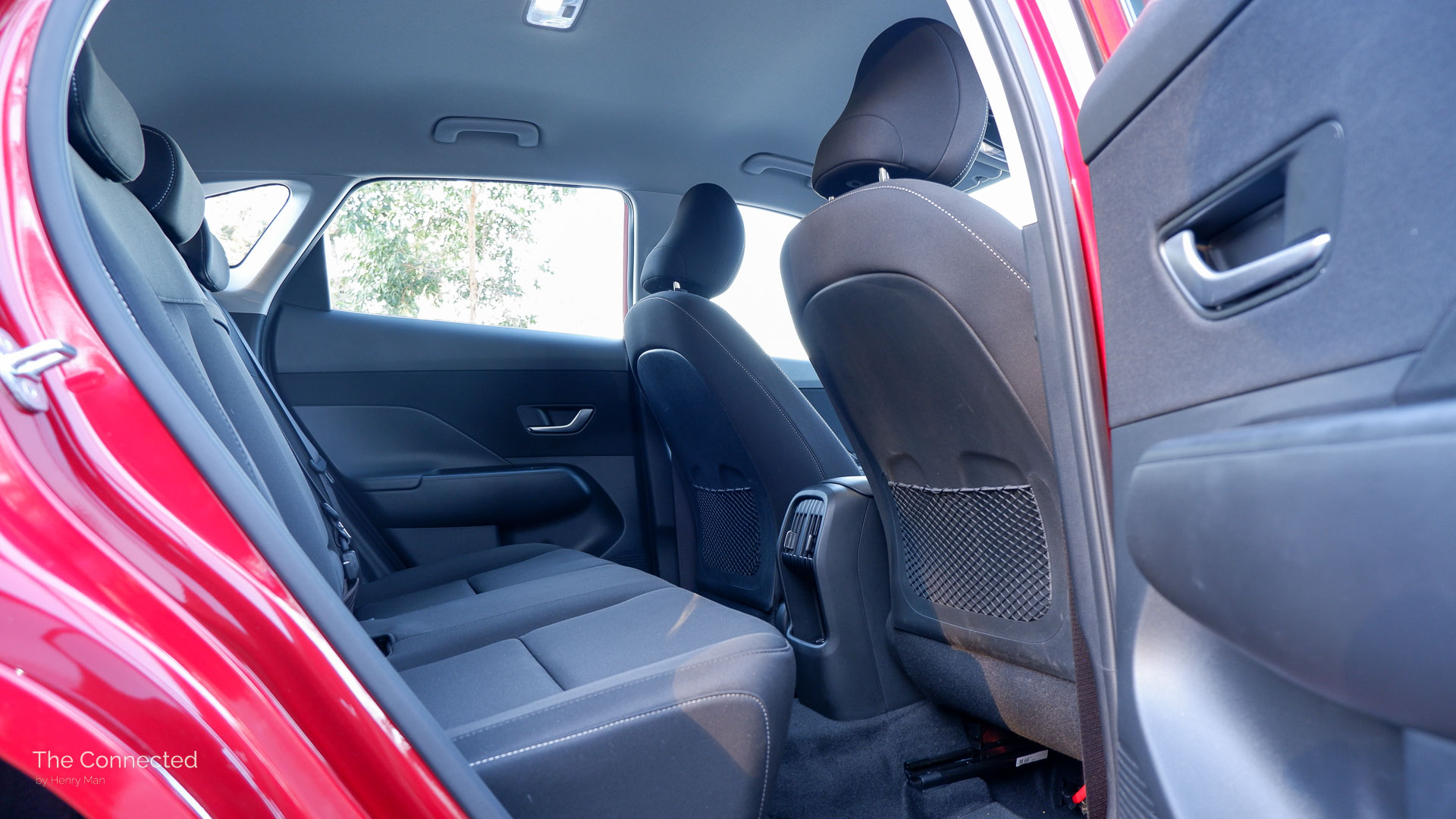
Practical interior.
The new-gen Kona is bigger in every dimension and is now more fitting of being labelled a family-friendly small SUV.
With all five seats in place, the Kona offers a practical 374-litre boot with a minimal load lip, wells on each side and includes an impressive number of four bag hooks, even though they’re somewhat low-positioned.
A cargo cover and securing net are standard, as opposed to the Kia Seltos where buyers need to step up to the circa-$45K top-spec GT-Line in order to only gain the former.
Meanwhile, the rear seats offer good head-, leg- and foot-room for regular family duties, two accessible ISOFIX child seat anchor points and three top-tethers, rear air vents, and a fold-down centre armrest.
However, there’s a noticeable protruding middle floor hump and the rear-right passenger needs to contend with less foot-room due the questionable 12-volt battery placement under the front driver’s seat (more on this below).
The rear door bottle pockets are also limited and buyers need to step up to the flagship Premium to gain factory tinted rear glass.
Two USB-C charging ports, a small storage slot, and seatback nets are also included for rear passengers. The standard front and rear LED lights illuminate the interior well, and there’s almost no use of fingerprint- and scratch-prone gloss black surfaces.

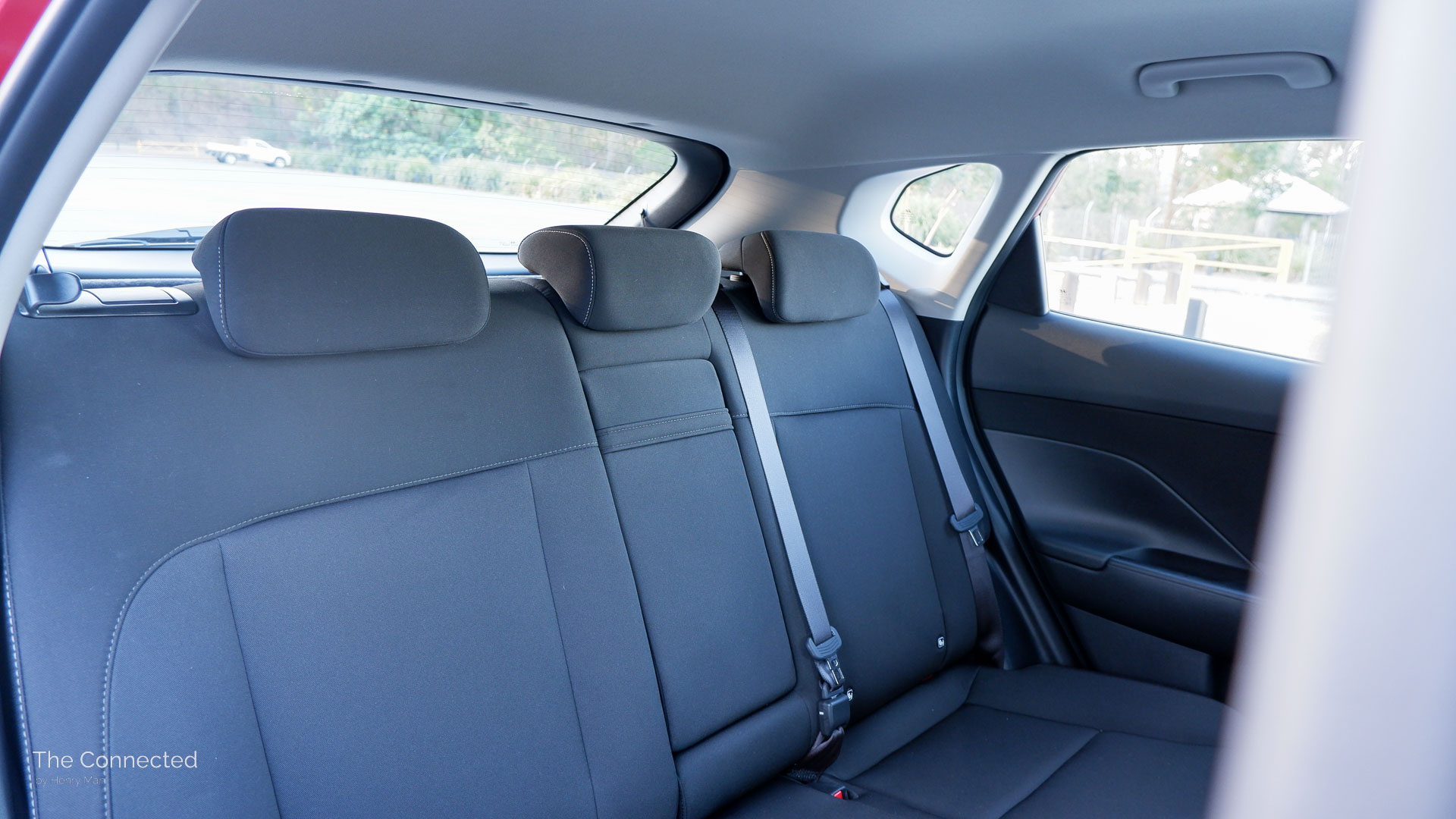

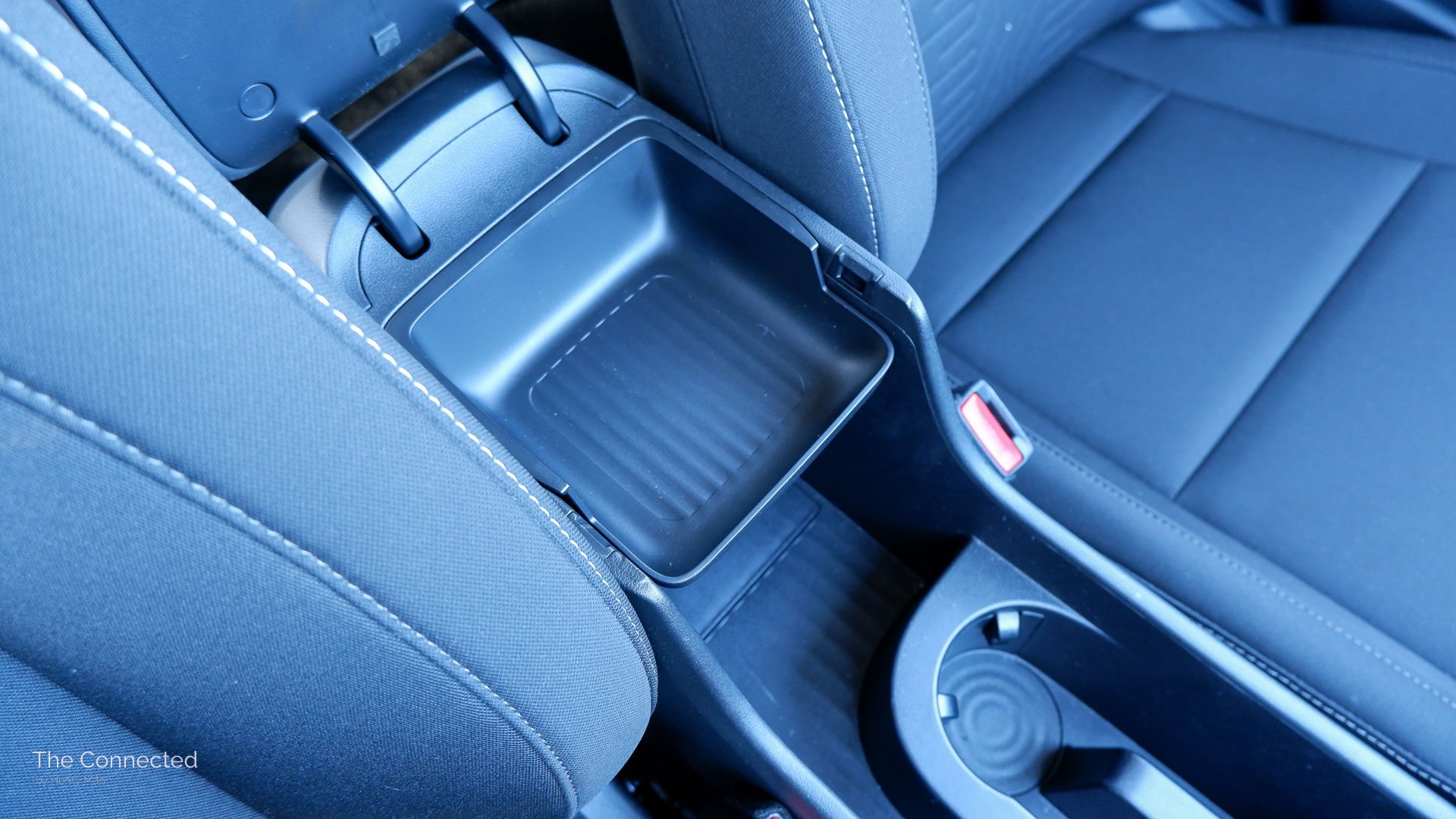
Up front, the new base Hyundai Kona (in pure petrol guise) exclusively has a physical gear shifter and a strange-looking cup holder design that provides narrower slots for smaller items.
Underneath the centre armrest is a removable tray that’s quite shallow to make way for an open storage space below. A standard larger and enclosed centre cubby would’ve been more practical.
Thankfully, there’s a good-sized glovebox to store items privately. Above it is an open dashboard tray, while the Qi wireless charging pad fits a large smartphone well, but can be tighter when a cable is plugged in.
The Kona still offers good tactile buttons, switches and a dedicated display to easily adjust the climate control. As per the Hyundai Ioniq 5 electric SUV, the magnetic board beside the instrument display isn’t as useful.
While both front seats are manually-adjustable only on this base spec, the driver does uniquely benefit from electric lumbar support.
All-round visibility is good with a good-sized rear glass opening.
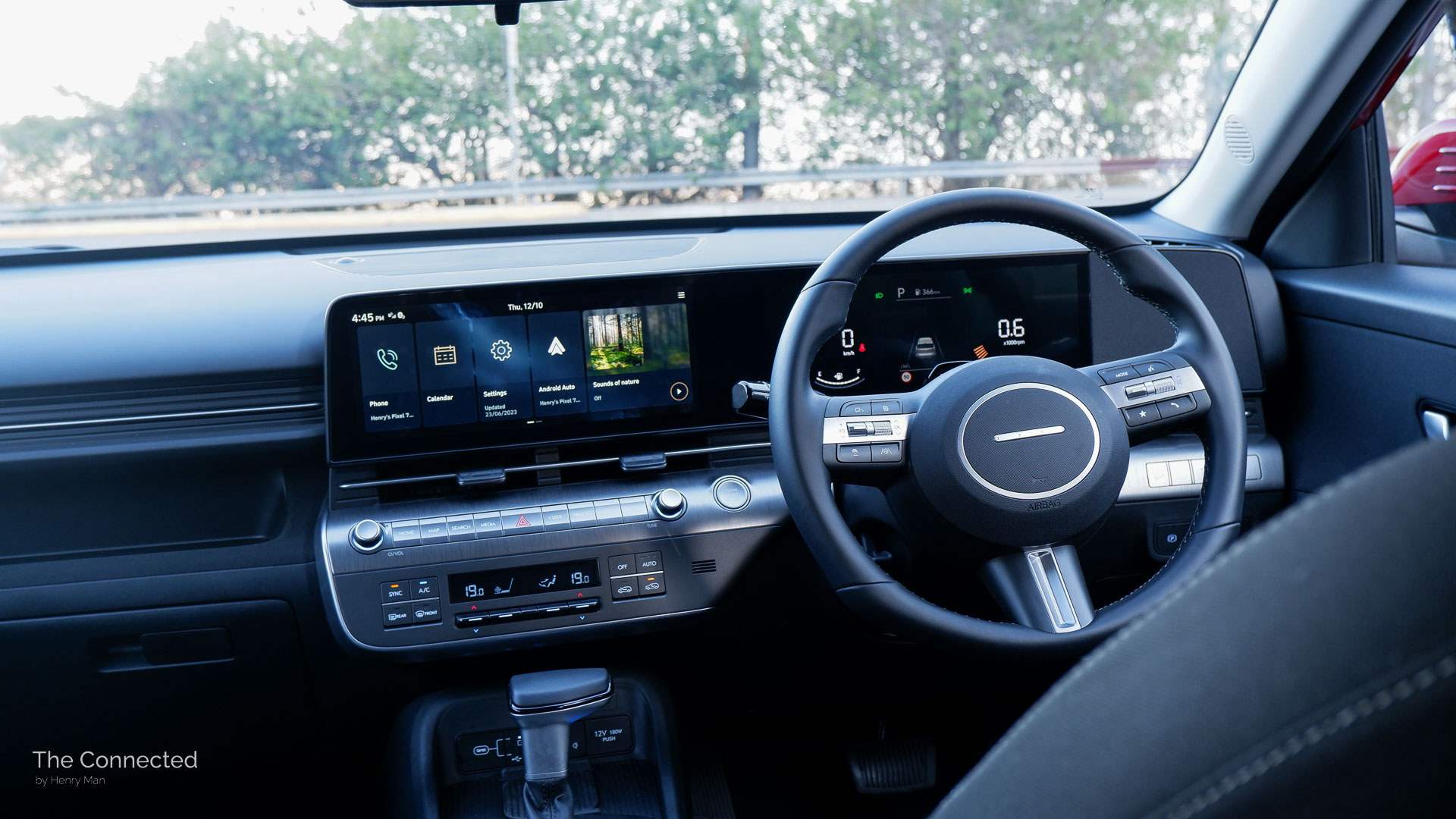
Functional tech.
The new entry-level Hyundai Kona small SUV features a large 12.3-inch central touchscreen running on the company’s latest Connected Car Operating System (ccOS).
The new software – which will roll out to all newly-released Hyundai group vehicles – debuts in the Kona in Australia with over-the-air (OTA) update capability, revamped ‘Sounds of Nature’ music, and a variety of smartwatch-esque clock faces to choose for the screensaver.
The user interface looks more modern with bigger, clearer icons and text, and the home button has finally been adapted on the right side for easier reachability for right-hand drive countries.
At the same time, it still has a familiar layout to its predecessor and is easy to use with a row of physical shortcut buttons underneath.
The Nvidia Drive architecture has also enabled smooth and sleek animations when navigating around menus, plus a Tesla-like visualisation for displaying the front and rear parking sensors.
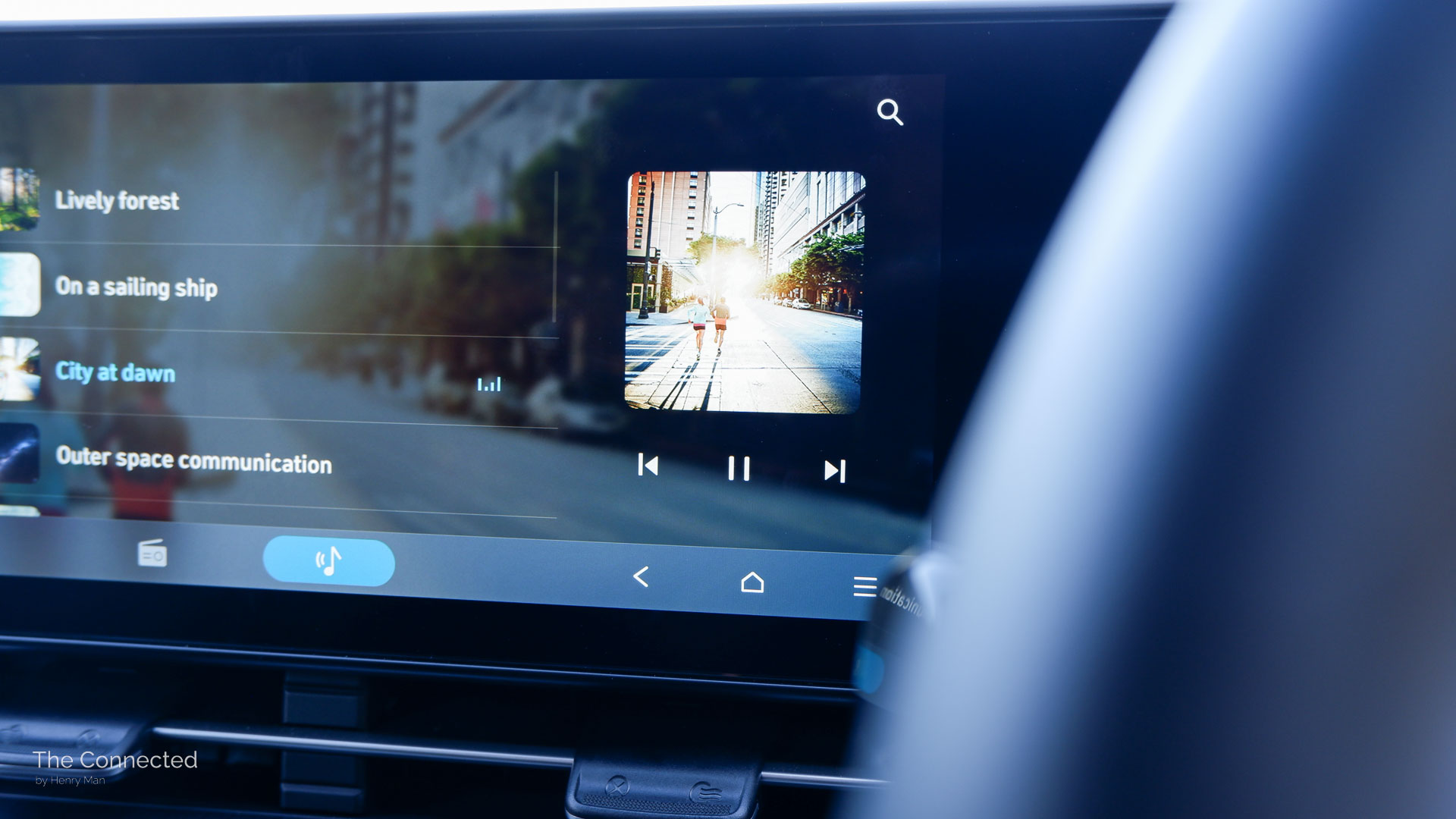
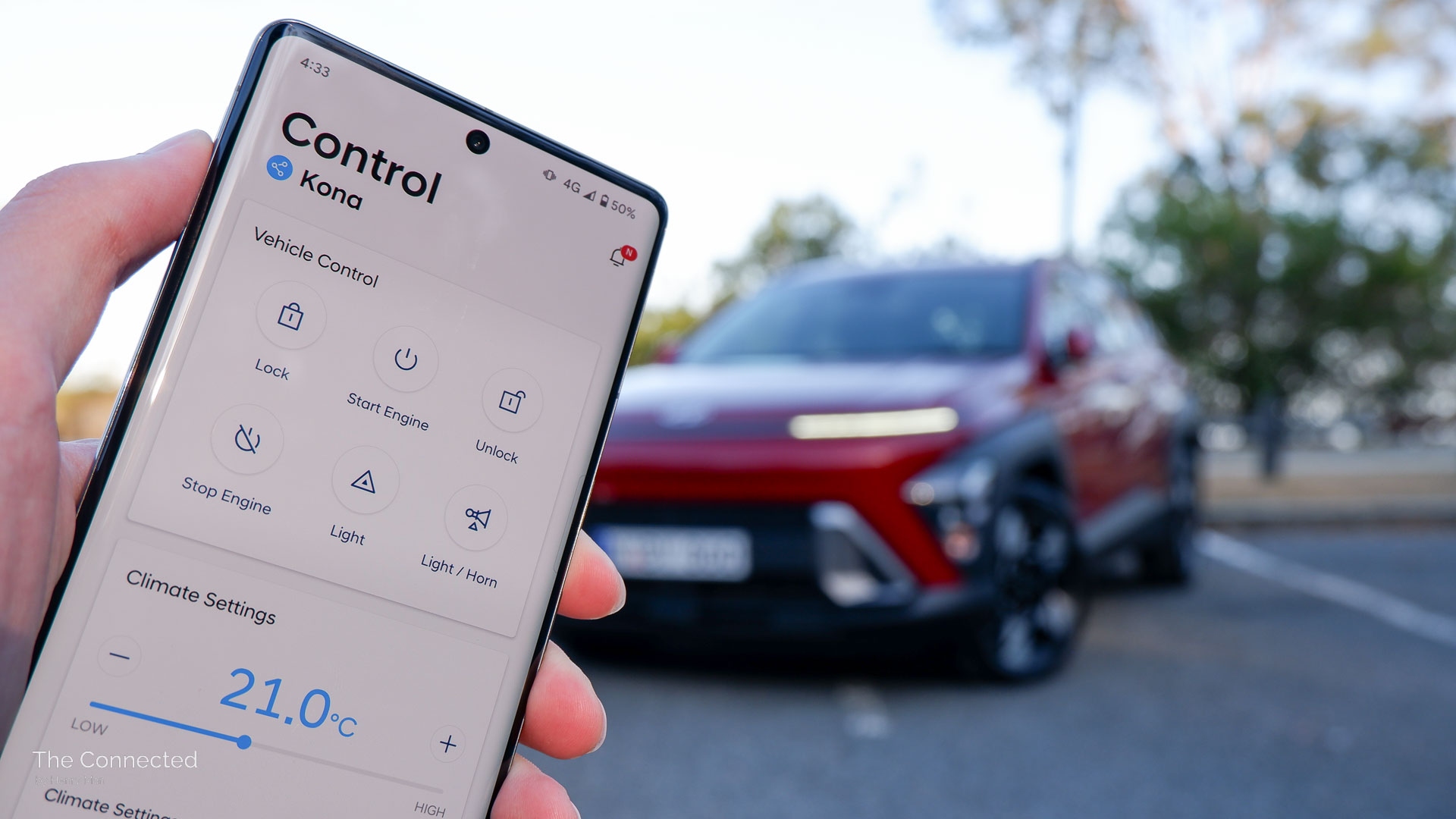

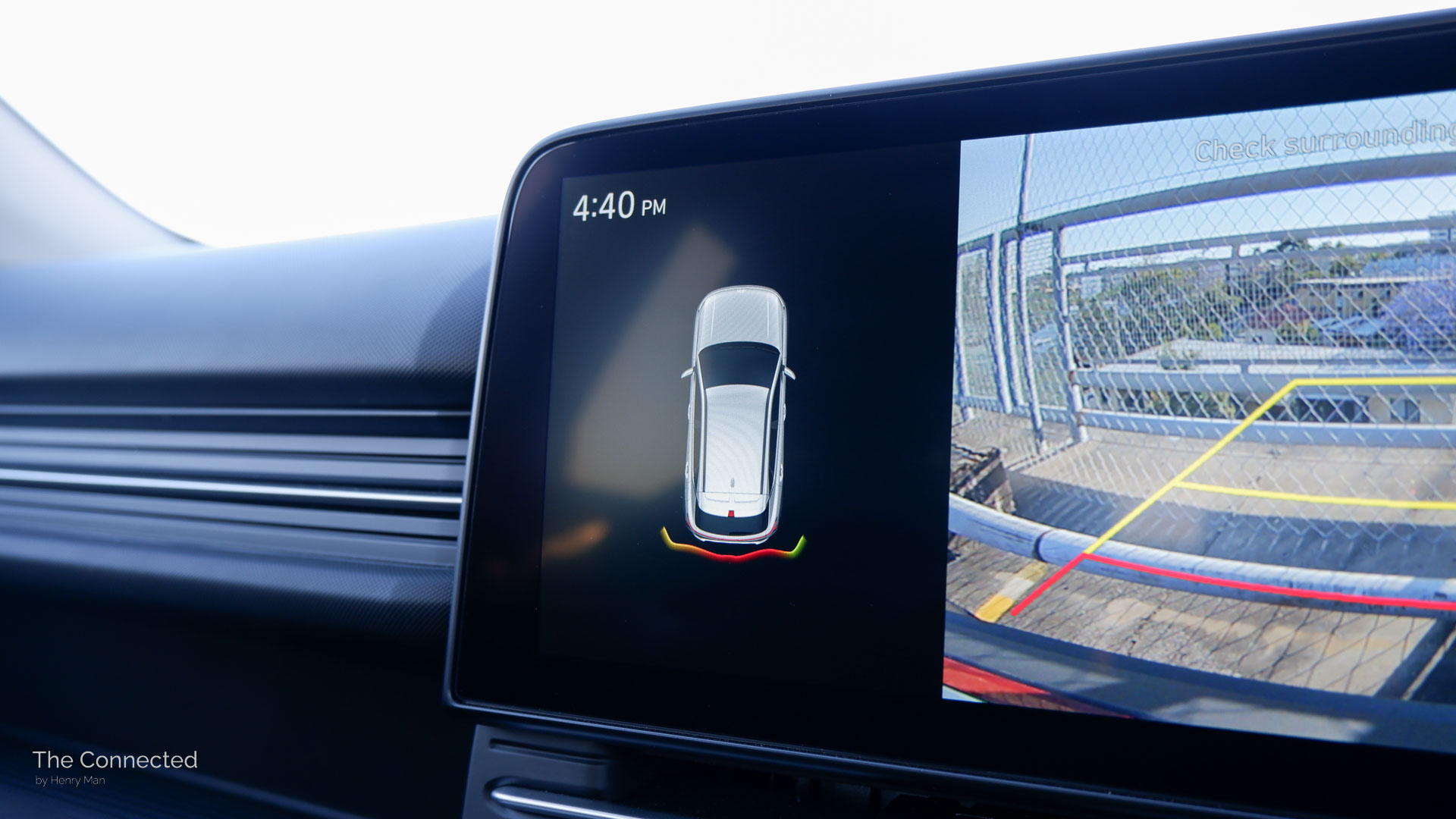
Since the base Kona runs on ccOS Lite, it doesn’t include built-in maps, but does offer wireless Apple CarPlay and wireless Android Auto smartphone projection.
In my week, wireless Android Auto worked well with no connection drop outs and performance was on par with a standard wired connection. It even adopts Google’s Fast Pair feature for the initial set up and always connected quickly when starting the vehicle.
Yet, I still mostly used a cable connection (more on this below).
Additionally, while there’s a smaller 4.2-inch driver instrument display, it still provides the same functionality as the full digital 12.3-inch unit on pricier variants. It even indicates when the rear brake lights are on, albeit only when adaptive cruise or auto hold is enabled.
The LED digital speed and engine rev readouts blend well to give the impression of a full screen, similar to other lower-specced Hyundai and Kia models such as the Sportage SX+ medium SUV.
However, I found the driver display slightly dim at times under the sun and would’ve liked a light mode on the touchscreen to further improve legibility.
Hyundai’s Bluelink built-in cellular and mobile app connectivity is standard (free for the first five years), providing features such as automatic emergency services calling and the ability to remotely unlock the doors, start the engine, and sound the alarm from a smartphone.
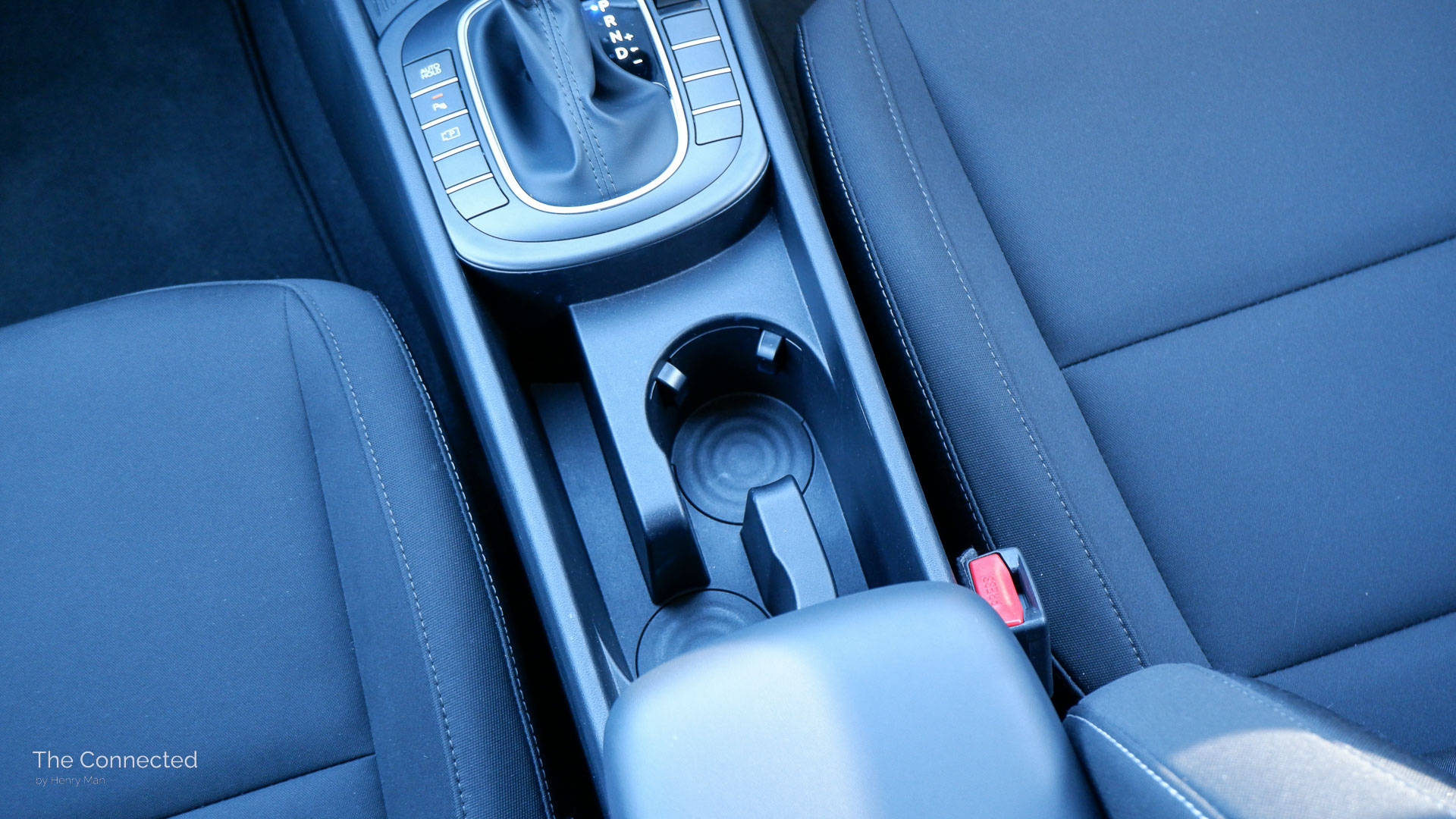
Basic interior.
While the new base model Hyundai Kona provides a value-packed list of standard features, the tradeoff is bland interior quality.
Hard plastics dominate the interior – with no padded door armrests – and the fabric seats look cheap and don’t feel as supportive for longer drives.
There is a leatherette steering wheel and centre armrest, but the trim is still thin and hard to touch. Metallic-looking and black fabric panels help slightly offset the boring interior, though.
Opting for the N Line package ($4000) should help lift up the interior’s perceived quality with its genuine Italian-made Alcantara seats and red accents, though some harder materials still persist.

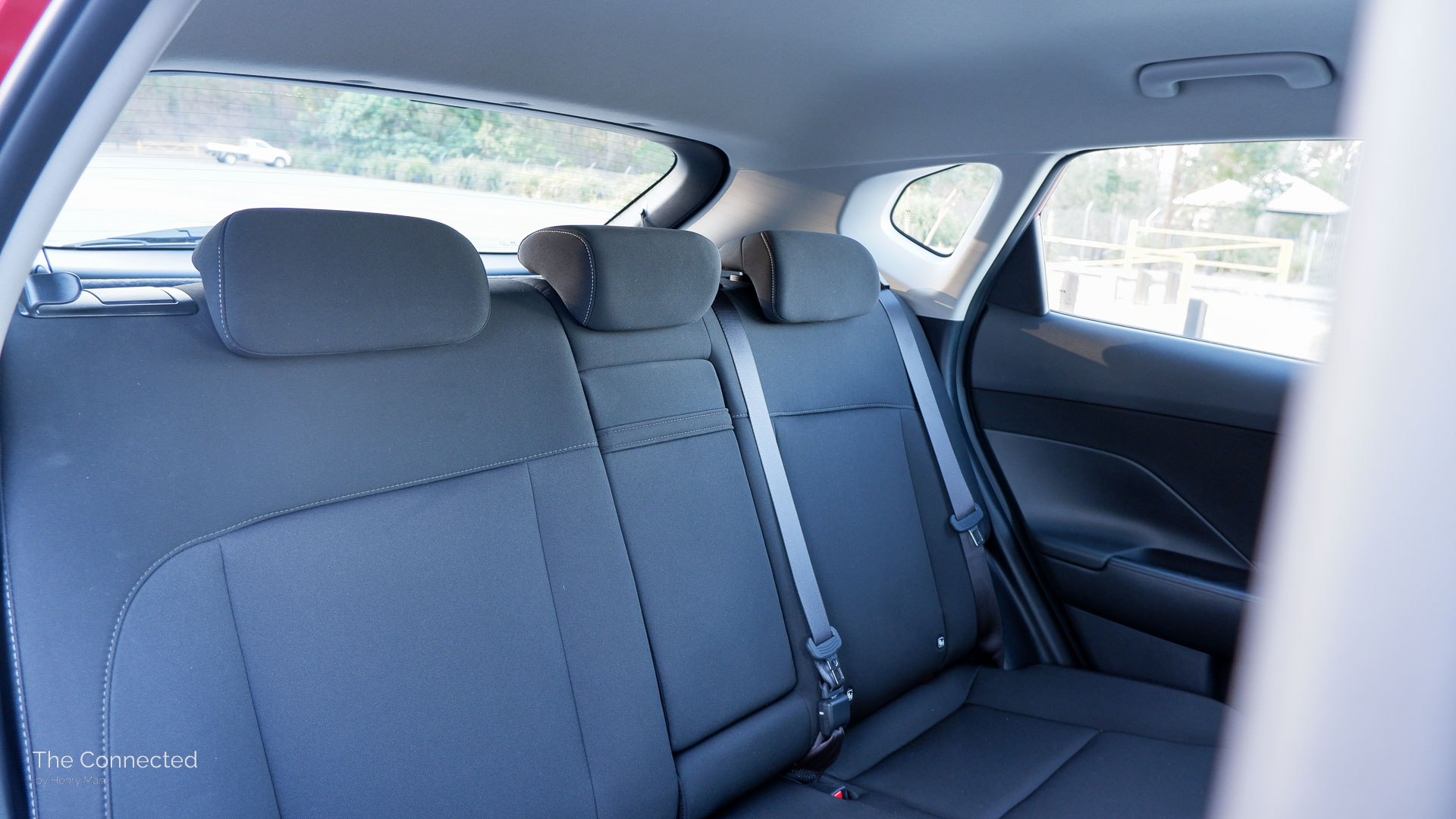
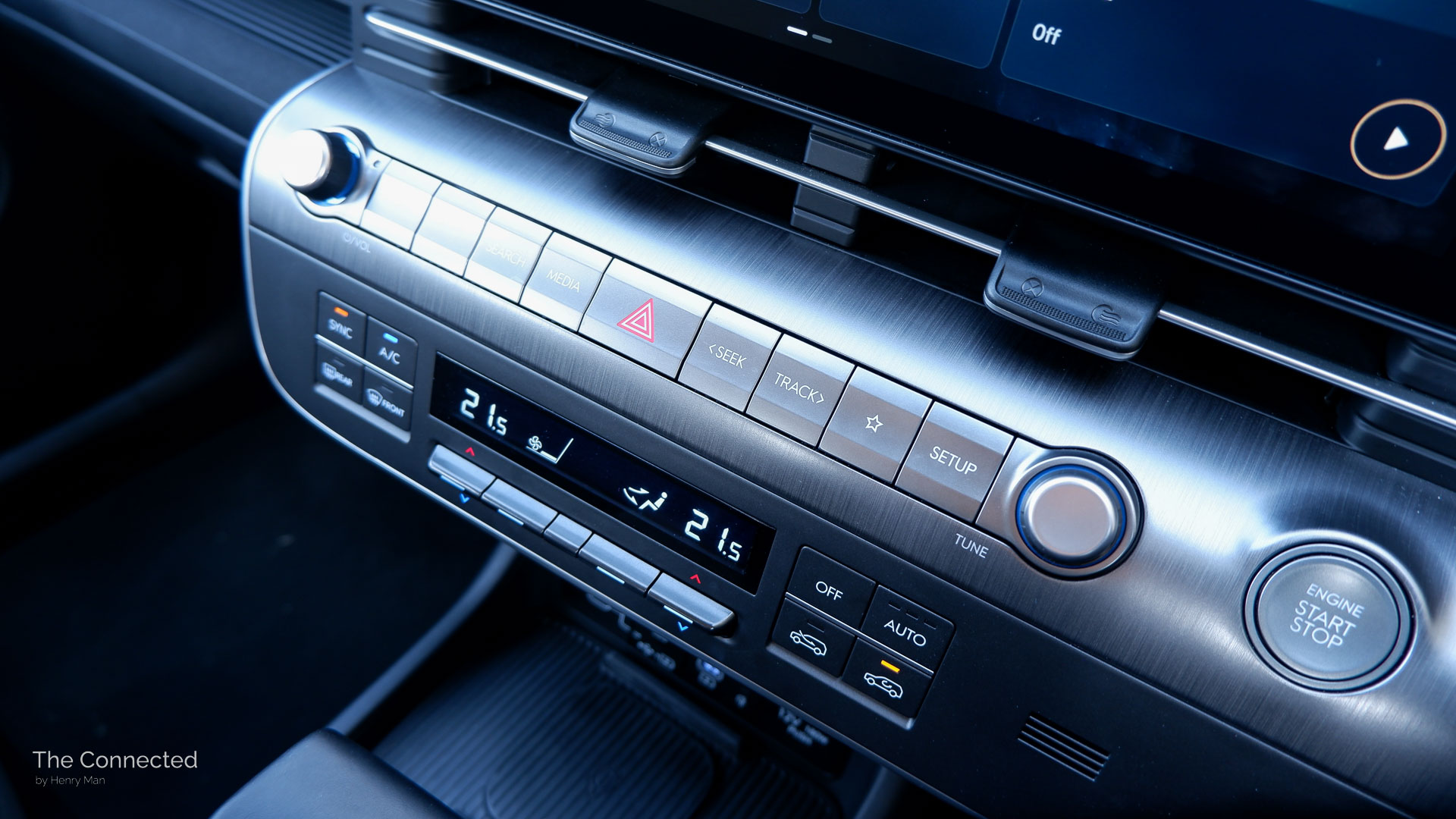
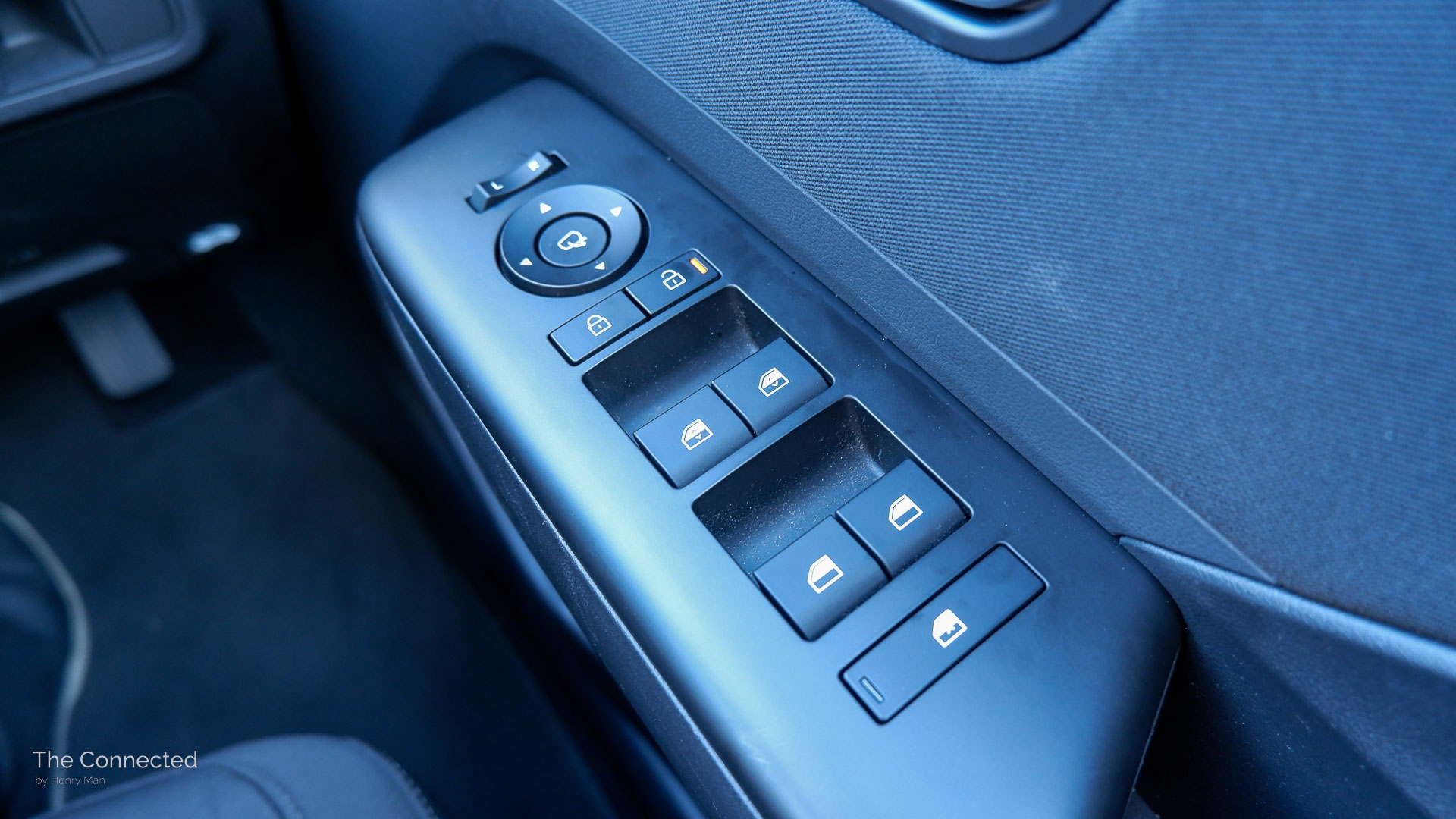
Furthermore, the centre console and tray aren’t lined with a rubberised or textured surface, so loose items can rattle on the rough plastics while driving. The Qi wireless charging pad rubber also looks sub-par, and tends to attract dust and discolour.
From the driver’s perspective, the gear shifter blocked the view of the critical left-hand-side rear-view camera and auto hold buttons when put in drive, with a blank column of buttons on the right.
While basic, the Kona’s interior is functional. This may not be a sticking point, depending on your priorities.
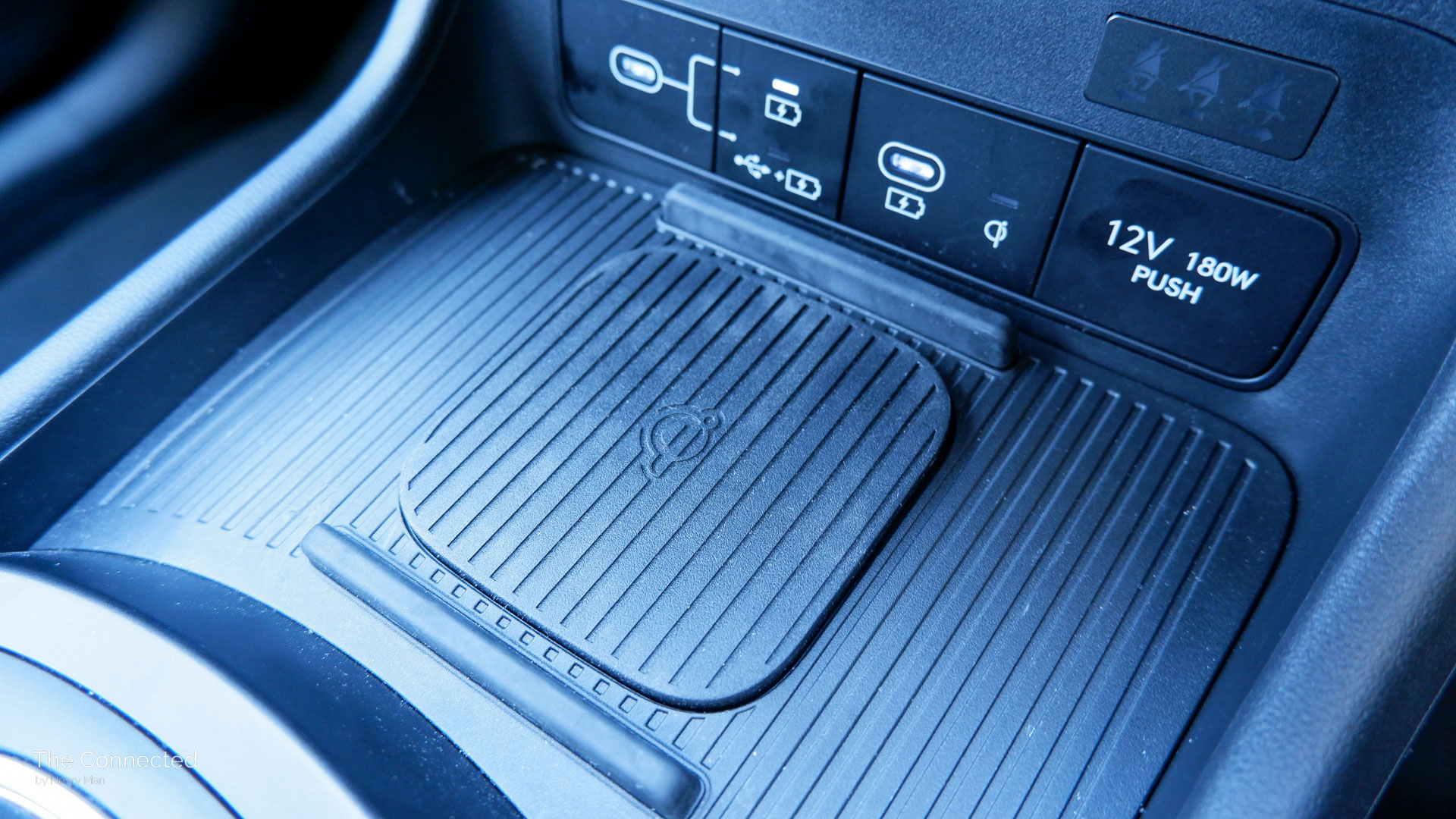
Moot wireless charging.
The Qi wireless charging pad is the key barrier to using wireless smartphone projection full-time on the new Kona.
While it’s a welcome standard inclusion not always found at this ‘affordable’ price point, the 15-watt pad lacks fan-cooling (unlike the more expensive Hyundai Ioniq 5) and the rubber material tends to absorb and contain heat.
This is compounded by the reality that using wireless Apple CarPlay or wireless Android Auto uses more processing power on the smartphone, resulting in more heat being generated (which is not good for the phone’s battery health).
Despite the pad protruding to elevate the smartphone slightly, in my hot summer-like week, the phone often charged too slow and became too hot, resulting in it not charging at all.
Therefore, I plugged in the USB-C cable for wired functionality instead.
It’s worth noting that this is a typical symptom of wireless smartphone projection in all cars, though it can be convenient for short trips if your phone has enough juice.
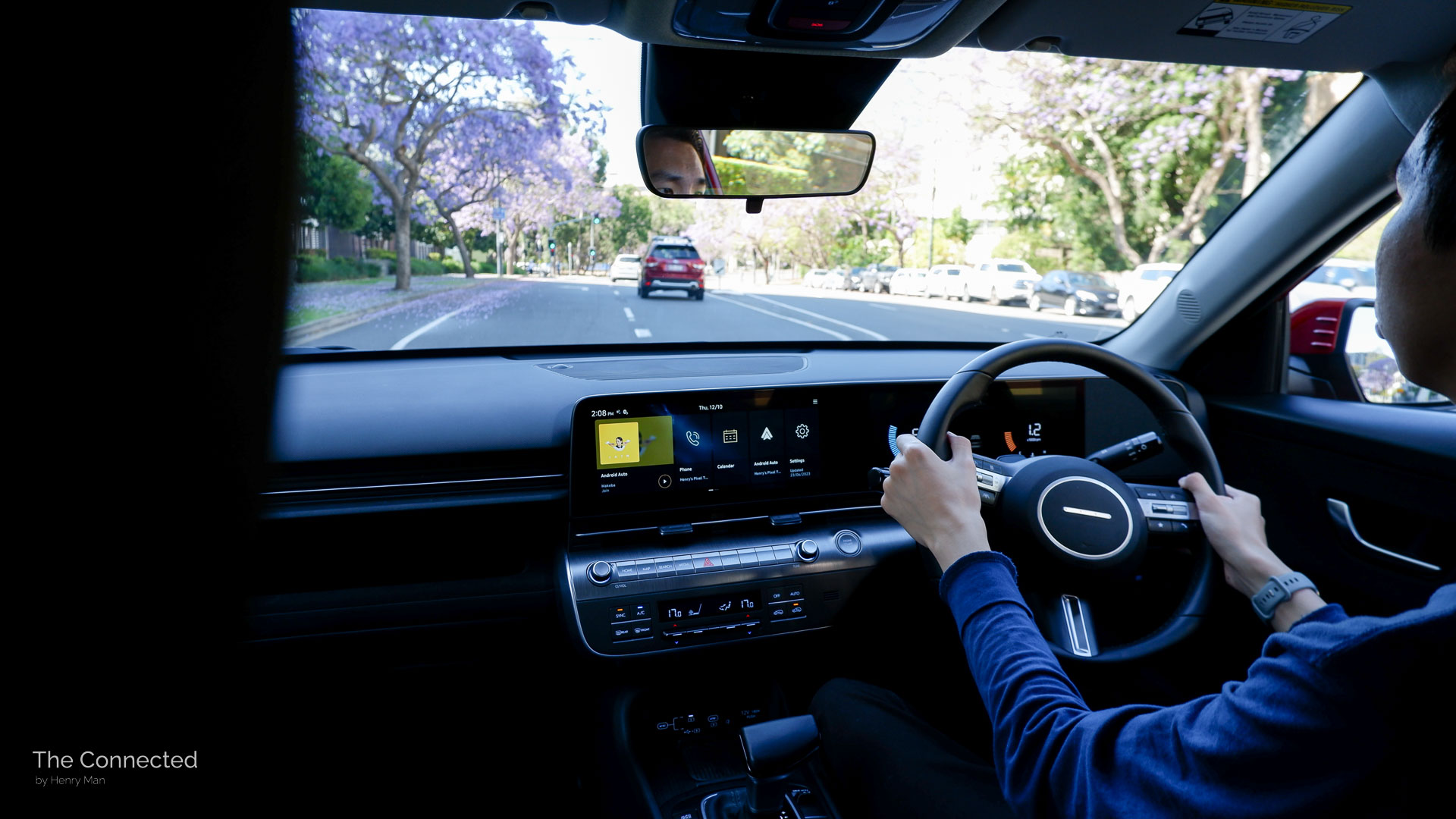
Sub-par driving comfort.
The bigger new Kona small SUV is now better suited for families. However, it isn’t as comfortable and quiet to drive.
Despite the smallest-available 18-inch wheels with a 215mm wide profile and 55mm sidewall rubber, the Kumho tyres have more road noise entering the interior than ideal, especially on rougher-paved roads.
General noise insulation also isn’t as refined as the Kia Seltos SUV and MG 4 electric hatch, while the suspension is on the firmer side and sharply rebounds from bumps.
That’s despite the Kona clearly not designed for sporty driving, with unengaging steering, noticeable body lean, and top-heavy weight due to its larger and taller size compared to its predecessor.
Meanwhile, the standard 2.0-litre petrol engine isn’t as refined with a loud and rough roar when initially igniting. When pushed, it unpleasantly groans due to the gearless CVT transmission, but relaxes when the driver isn’t pressing hard on the accelerator.
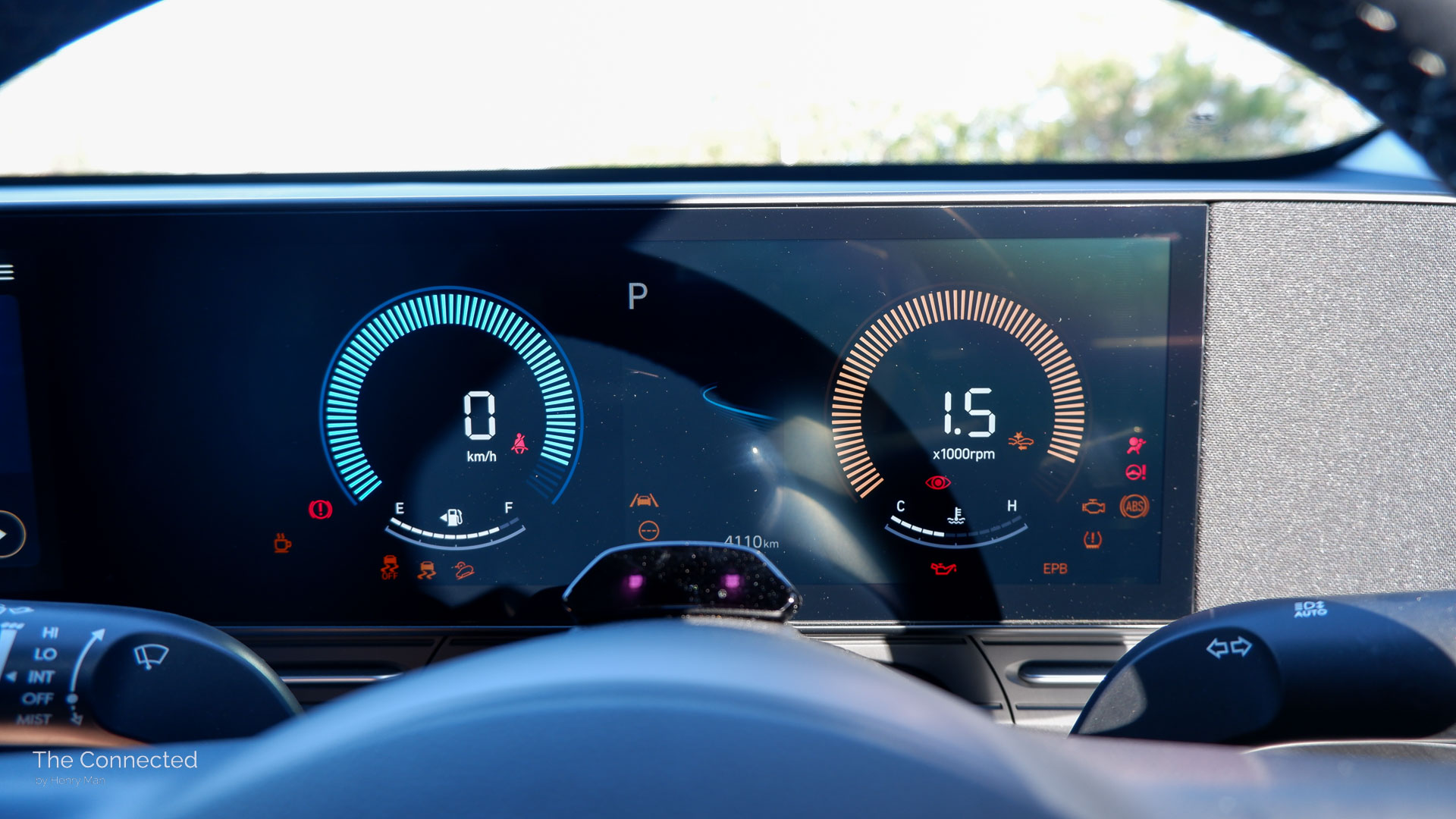
Fuel consumption.
Amid record high fuel prices, the Hyundai Kona’s efficiency isn’t as impressive either.
In my week of highway-biased and urban driving, the Kona indicated a 9.4L/100km average fuel consumption, equating to 500-kilometres real-world range from its 47-litre fuel tank.
To note, I mainly left it in normal driving mode and did blast the air-conditioning at times to get through the summer-like weather.
It can accept the cheapest 94RON E10 unleaded petrol.
While I haven’t tested it yet, the optional petrol-electric hybrid powertrain ($4000) is worth considering. Despite the smaller 38-litre fuel tank, Hyundai claims a low 3.9L/100km combined fuel efficiency for 974km driving range. That beats the Toyota Corolla Cross Hybrid’s claim, if true in reality.
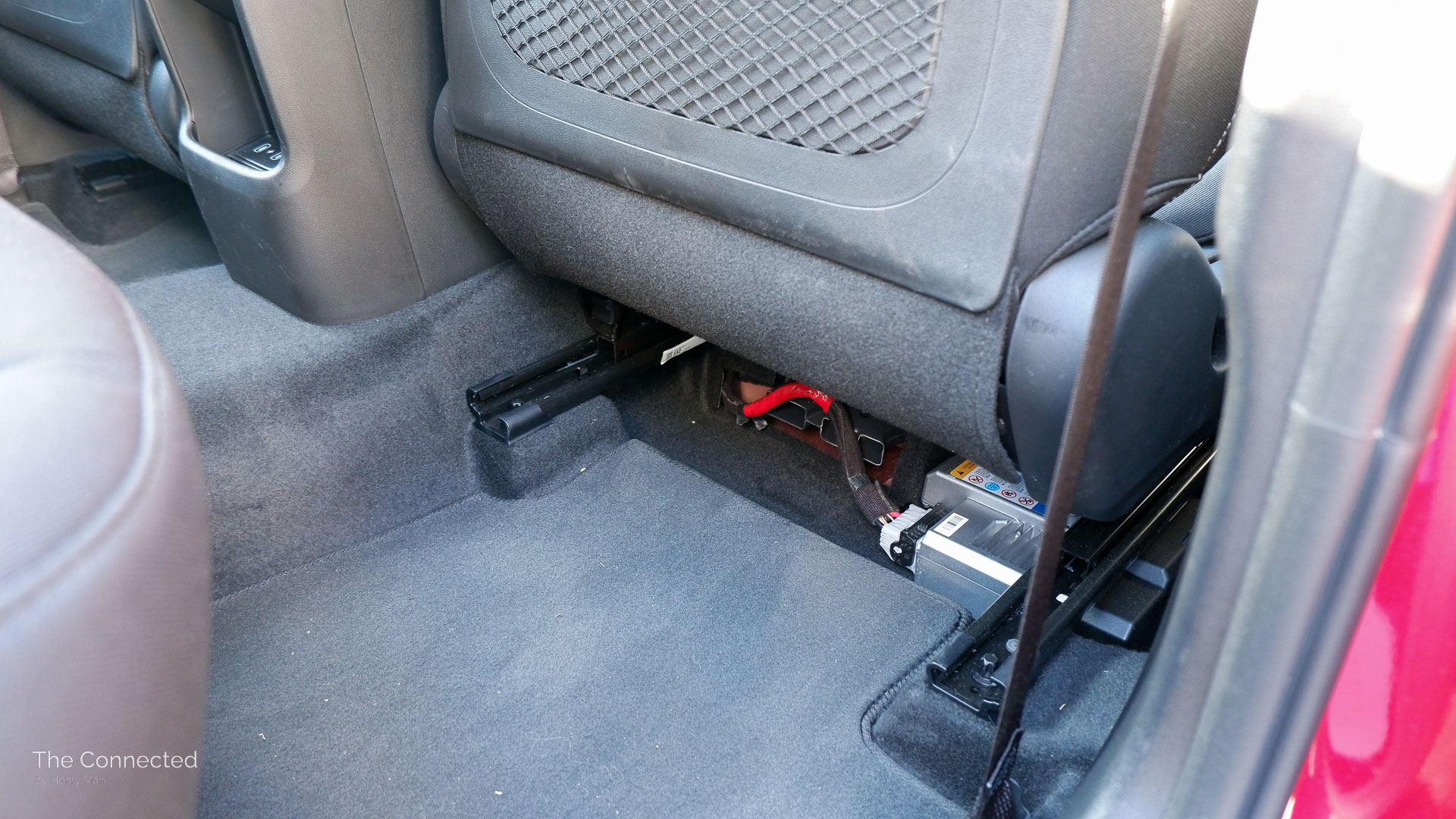
Odd 12V battery placement.
In my Kona tester, the 12-volt electronics battery is peculiarly positioned under the driver’s seat without any cover.
It is a strange placement, as this limits the rear-right passenger’s foot-room and can constantly kick the exposed module and wiring.
I have not seen this on any other Hyundai group vehicle before (it’s usually under the front bonnet) and seems to be an afterthought of the EV-first design.
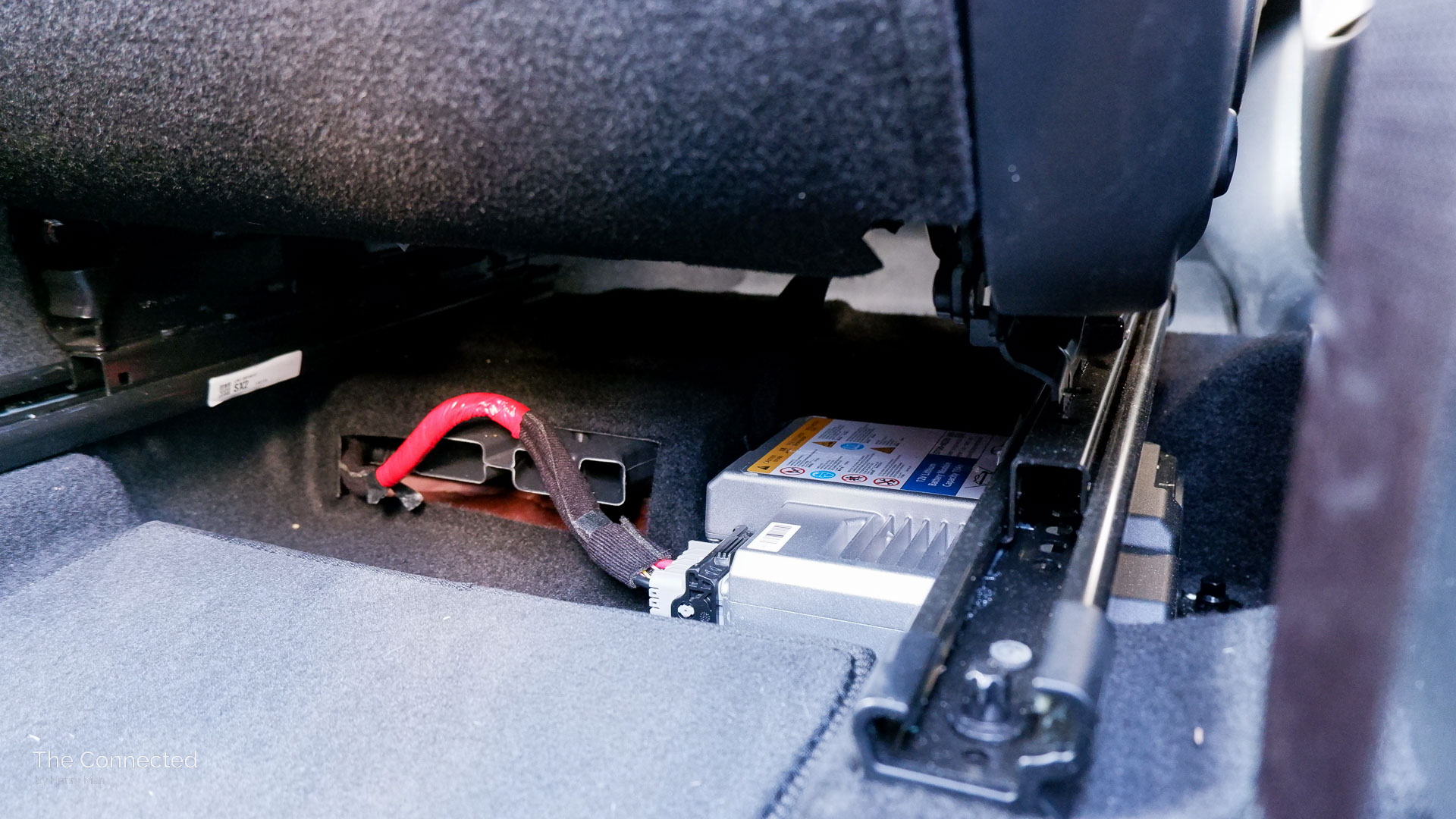
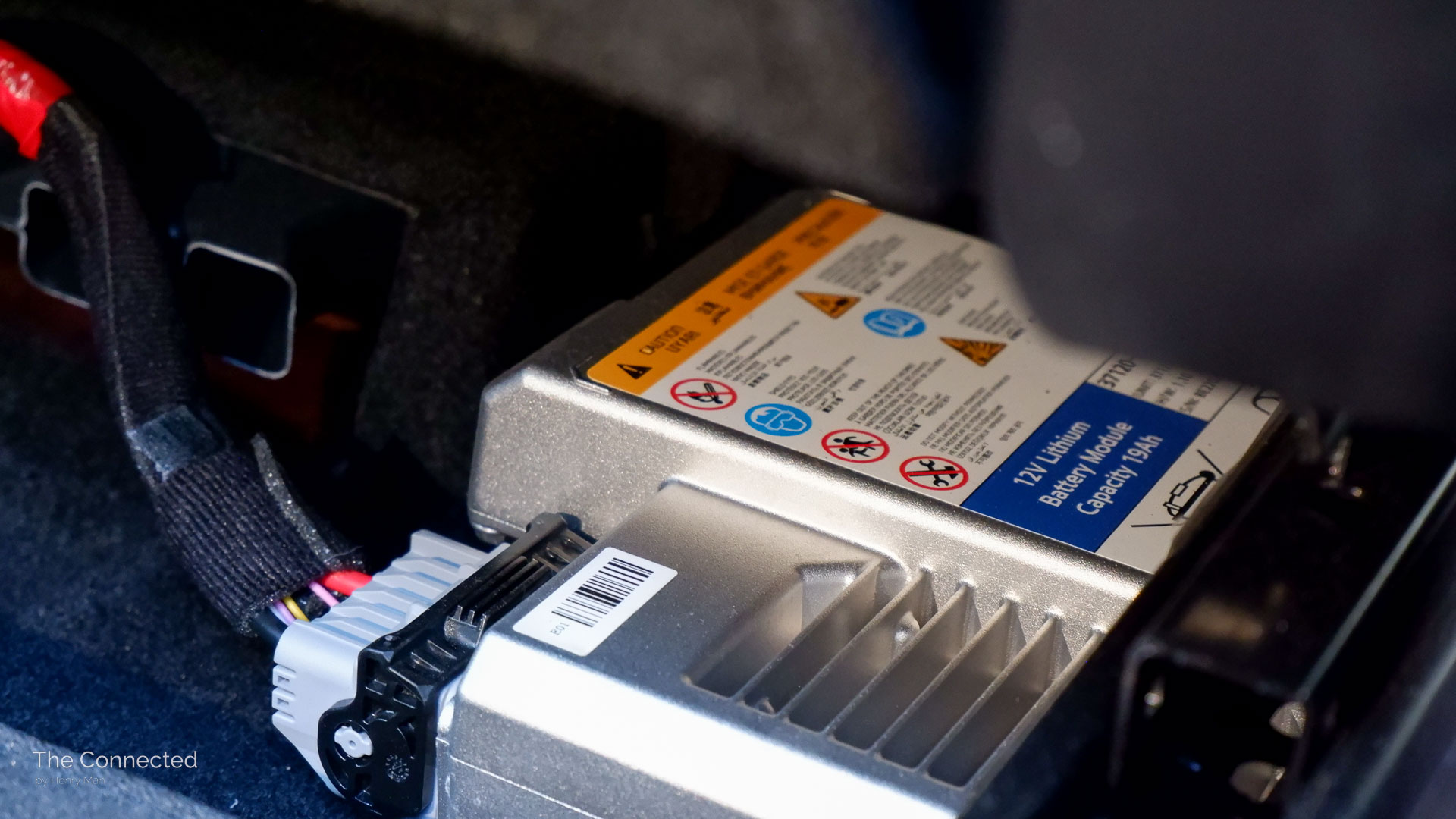

Less and more chimes.
Hyundai’s new ccOS software finally no longer chimes when the driver’s seatbelt isn’t buckled on start-up, but there’s other new warnings to contend with.
The infamous European-centric speed limit assist system – which first debuted in the Hyundai Palisade and Kia Seltos SUVs in Australia – still persists in the new Kona by sounding whenever the vehicle passes a new road sign or travels a hair above the detected speed limit (which isn’t always accurate).
It still re-activates every time owners start the vehicle with the same shortcut method to deactivate it.
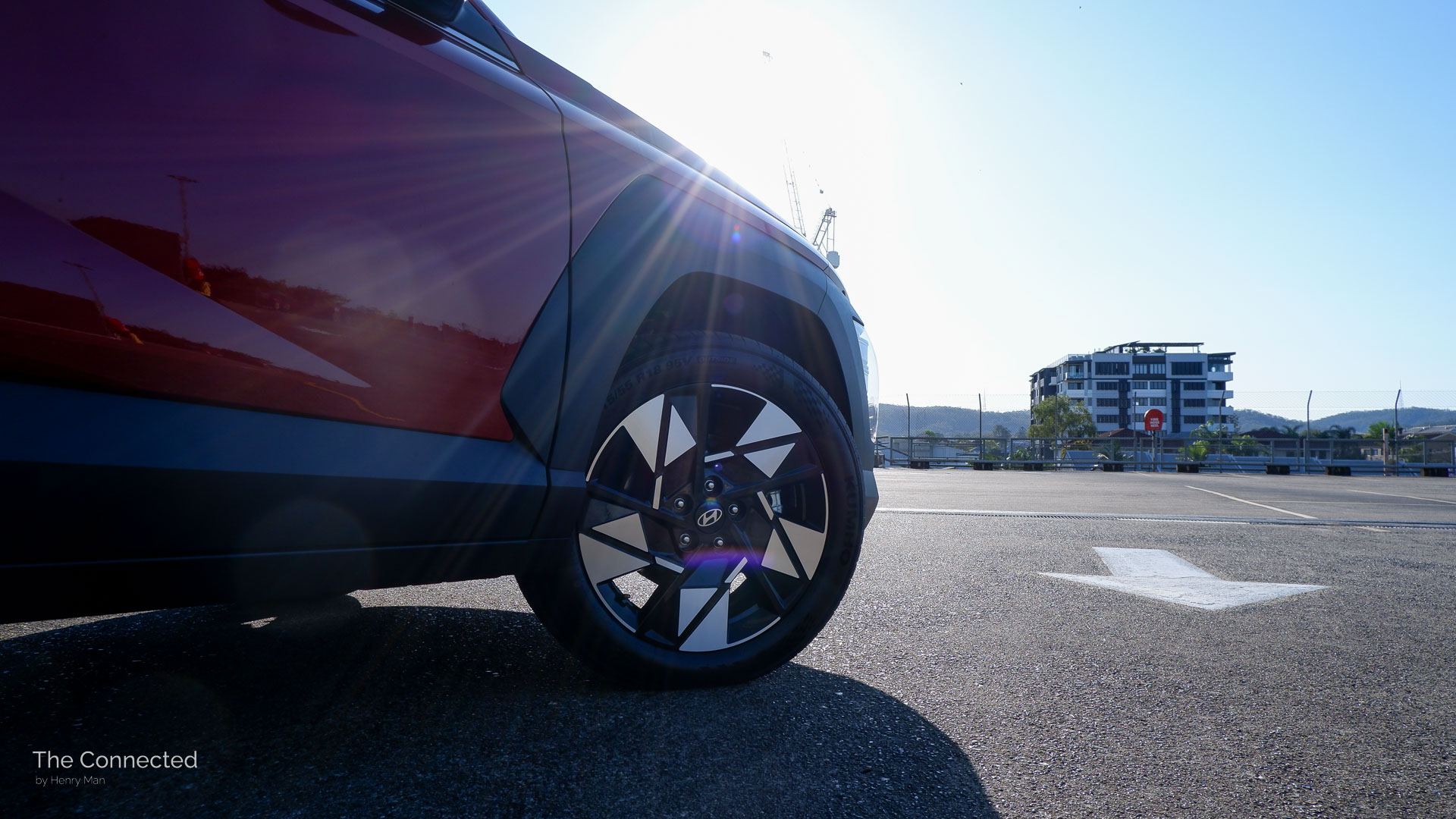
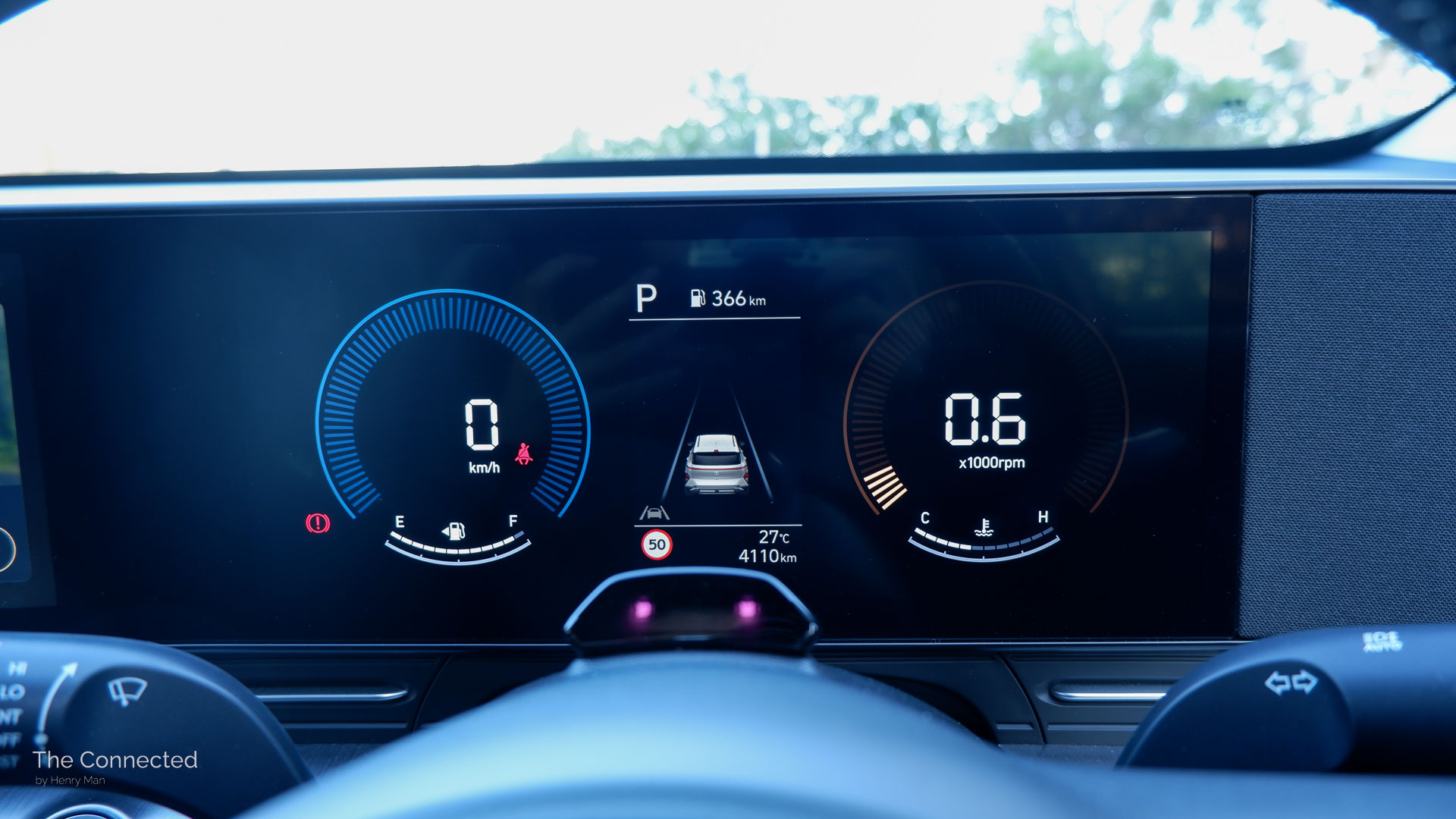
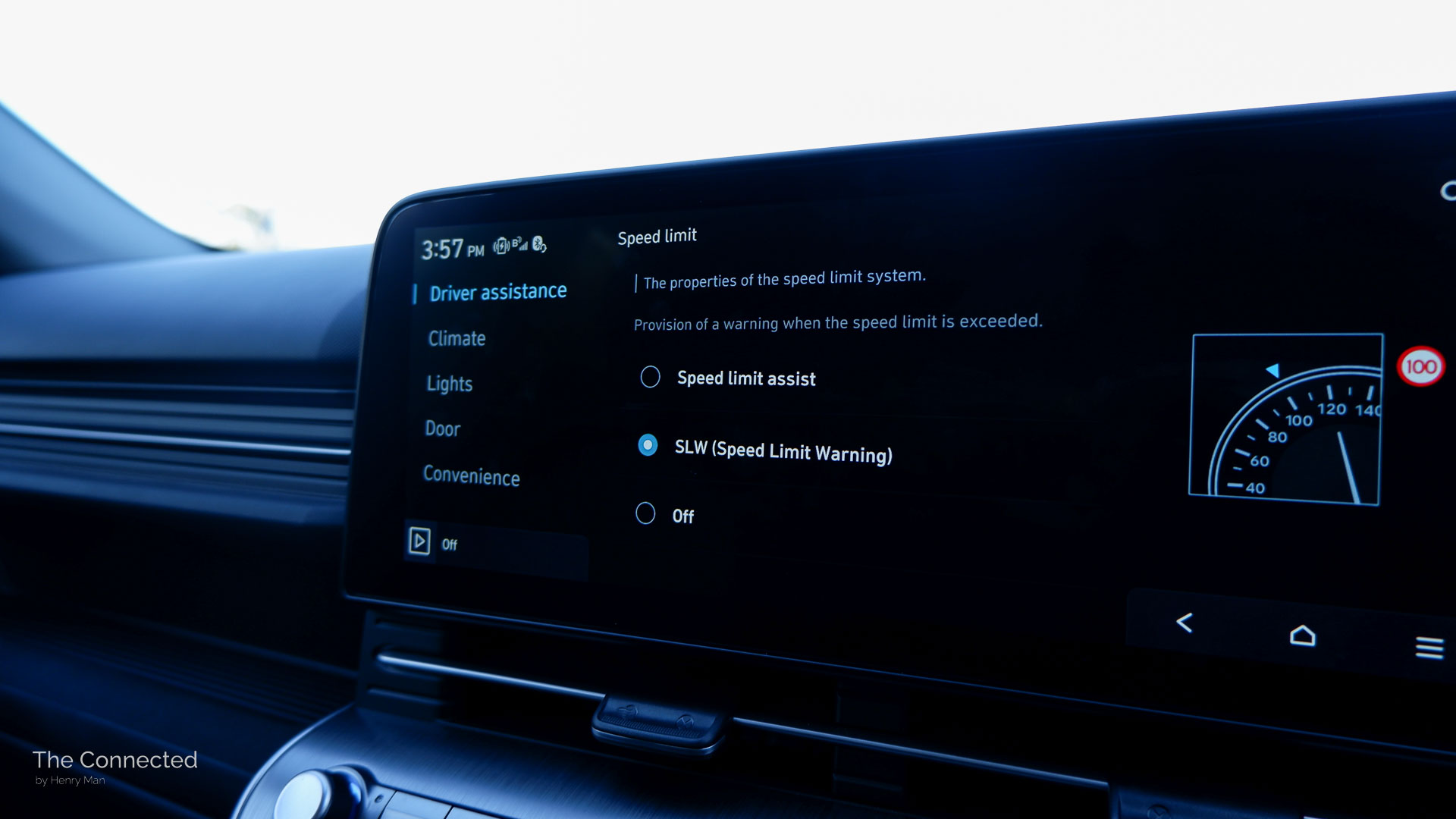

However, the new software brings slightly softer-tone chimes that slightly reduces the irritation, but still interrupts any conversation, podcast or music track playing.
The exterior beeping sound that warns when the vehicle is still turned on and the key is outside is now much quieter and more discreet.
On the other hand, the Kona SUV is the first Hyundai group vehicle in Australia to debut a driver attention monitoring infrared camera that chimes whenever the driver’s eyes looks away from the road ahead.
It’s arguably a welcome addition and isn’t too sensitive, but it can chime at the same time as the speed limit warnings and this can be, again, irritating at times.
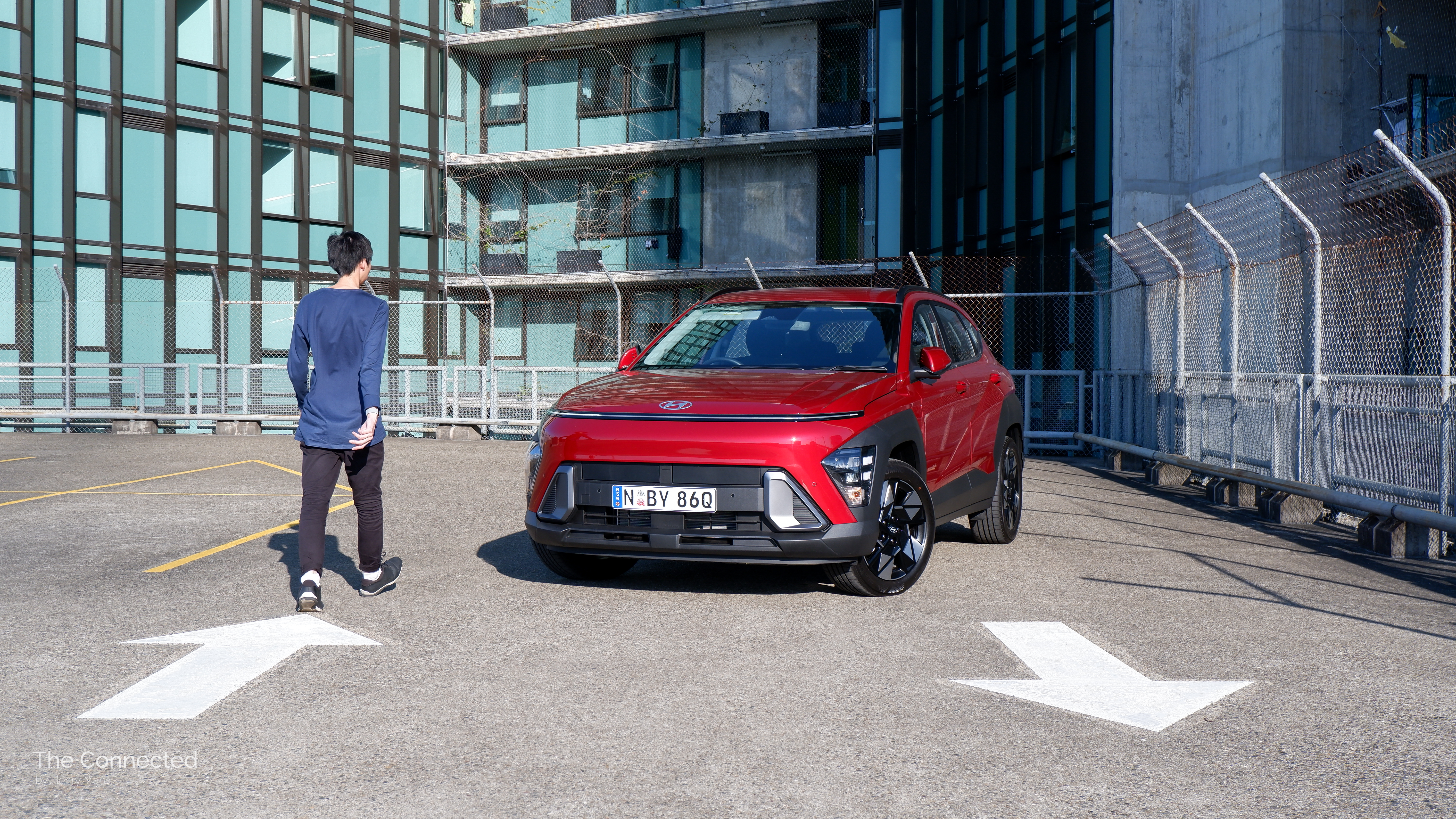
Would I pick the 2024 Hyundai Kona 2.0L?
The new Hyundai Kona is an excellent value, family-friendly and futuristic-looking small SUV in cheapest base guise.
It’s far more practical than its predecessor with more standard features – yet only commands a $100 price premium – and is a significantly better value choice than the facelifted, but ageing, Kia Seltos.
While the interior is bland and adorned by hard plastics, it is functional and the standard petrol engine does the simple job of driving from A to B without any thrills.
I’d pick the base Hyundai Kona Hybrid to save on ownership costs, cut tailpipe emissions, and gain the more practical open-type centre console.
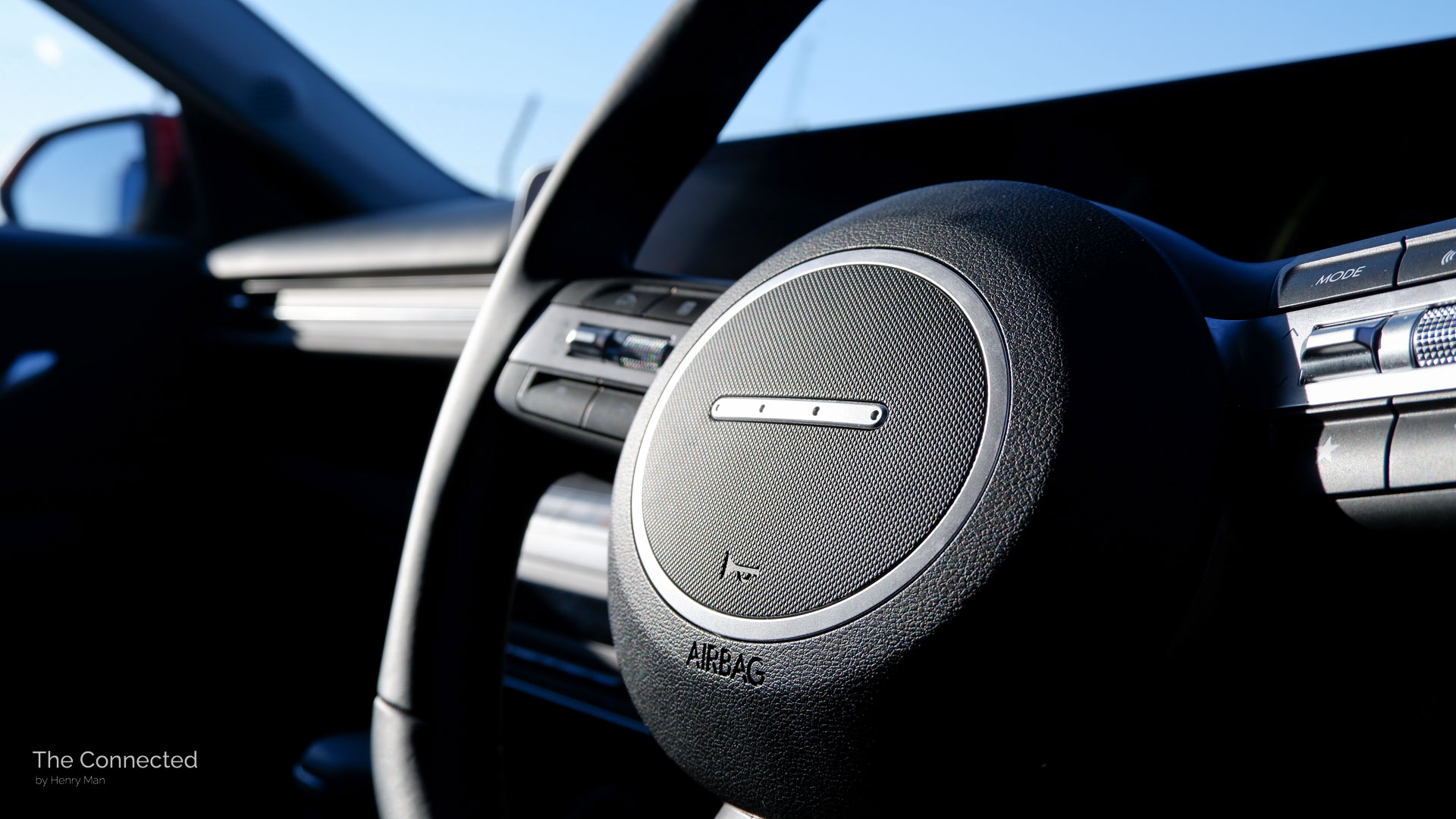
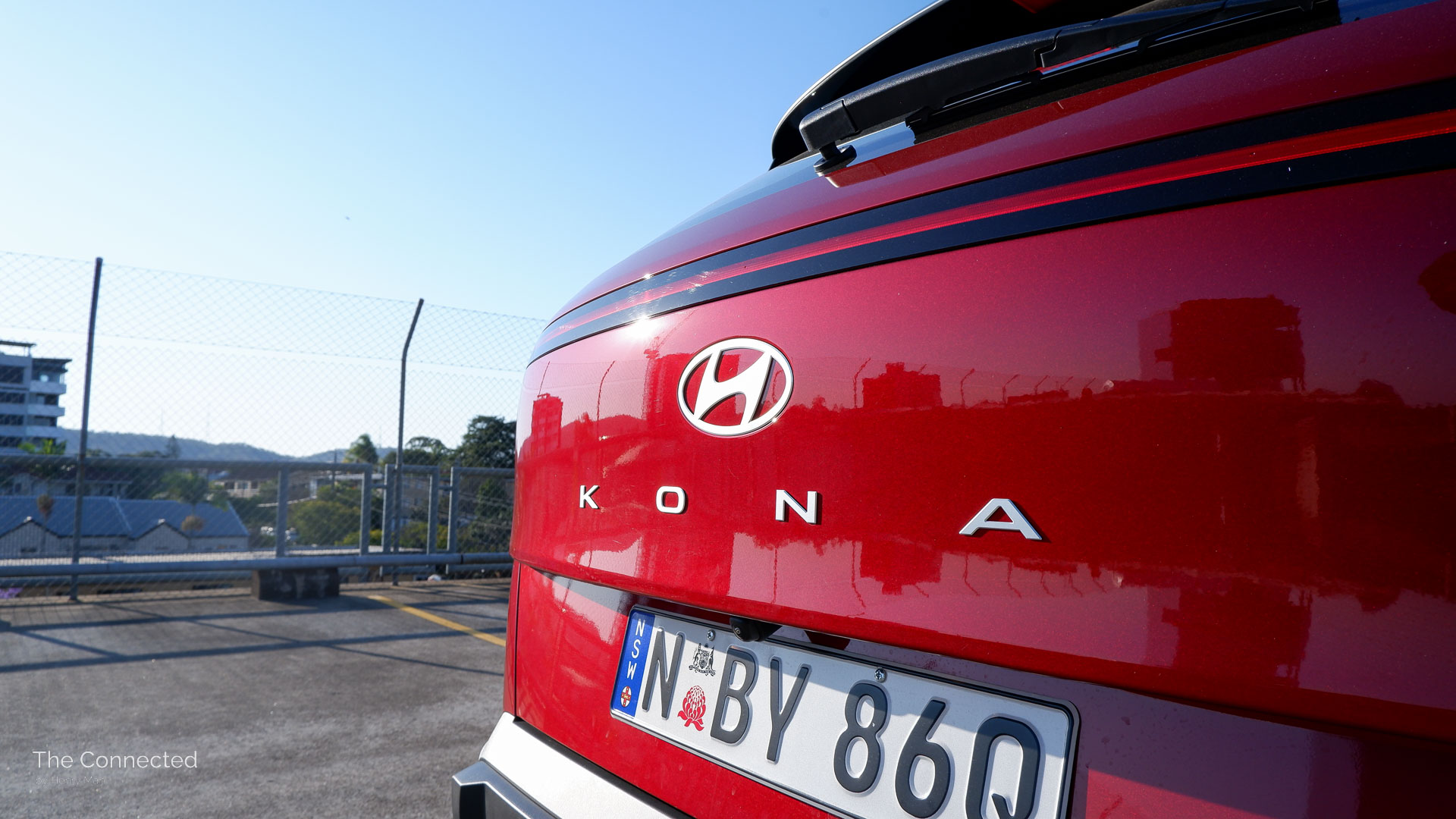
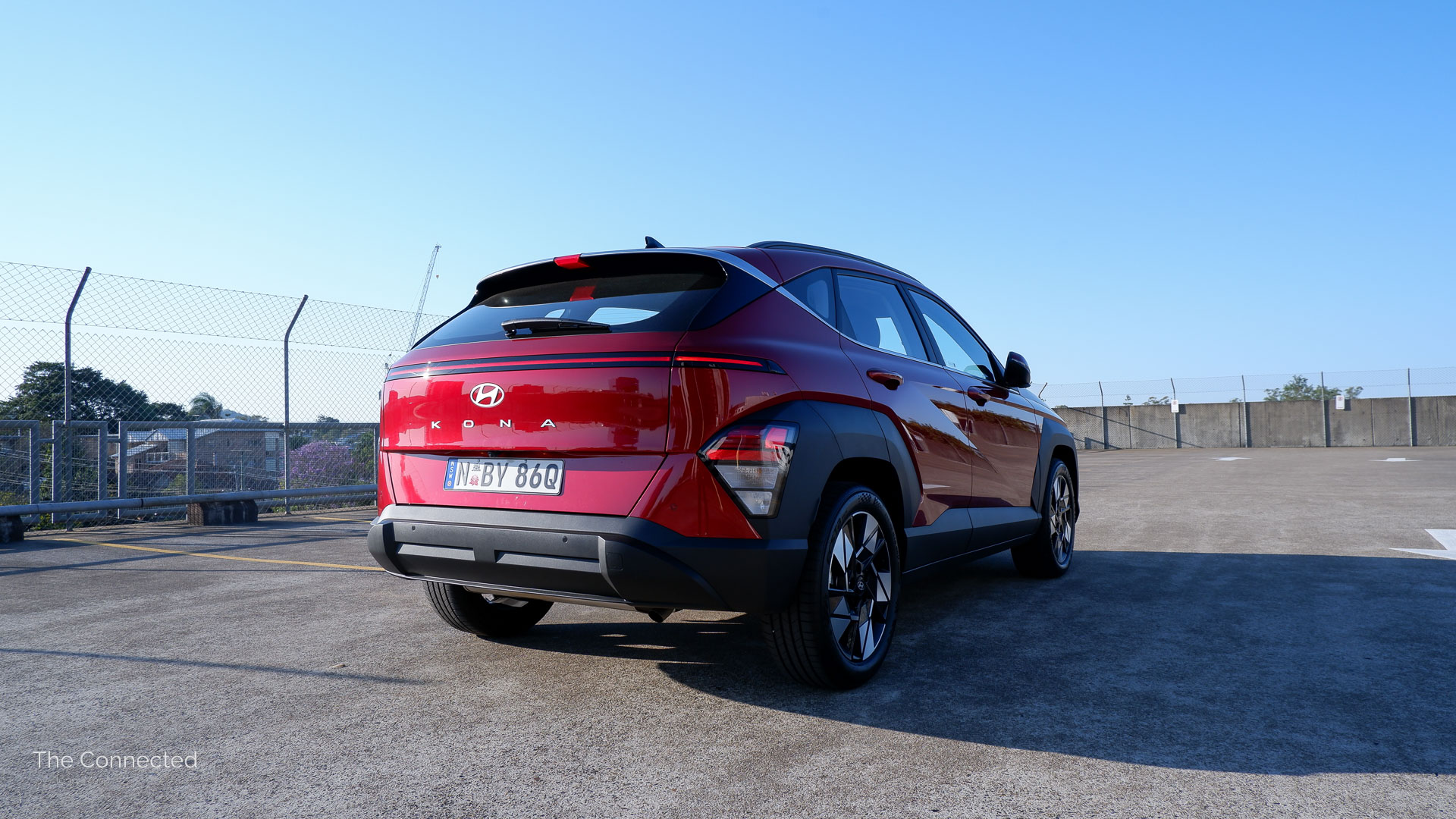
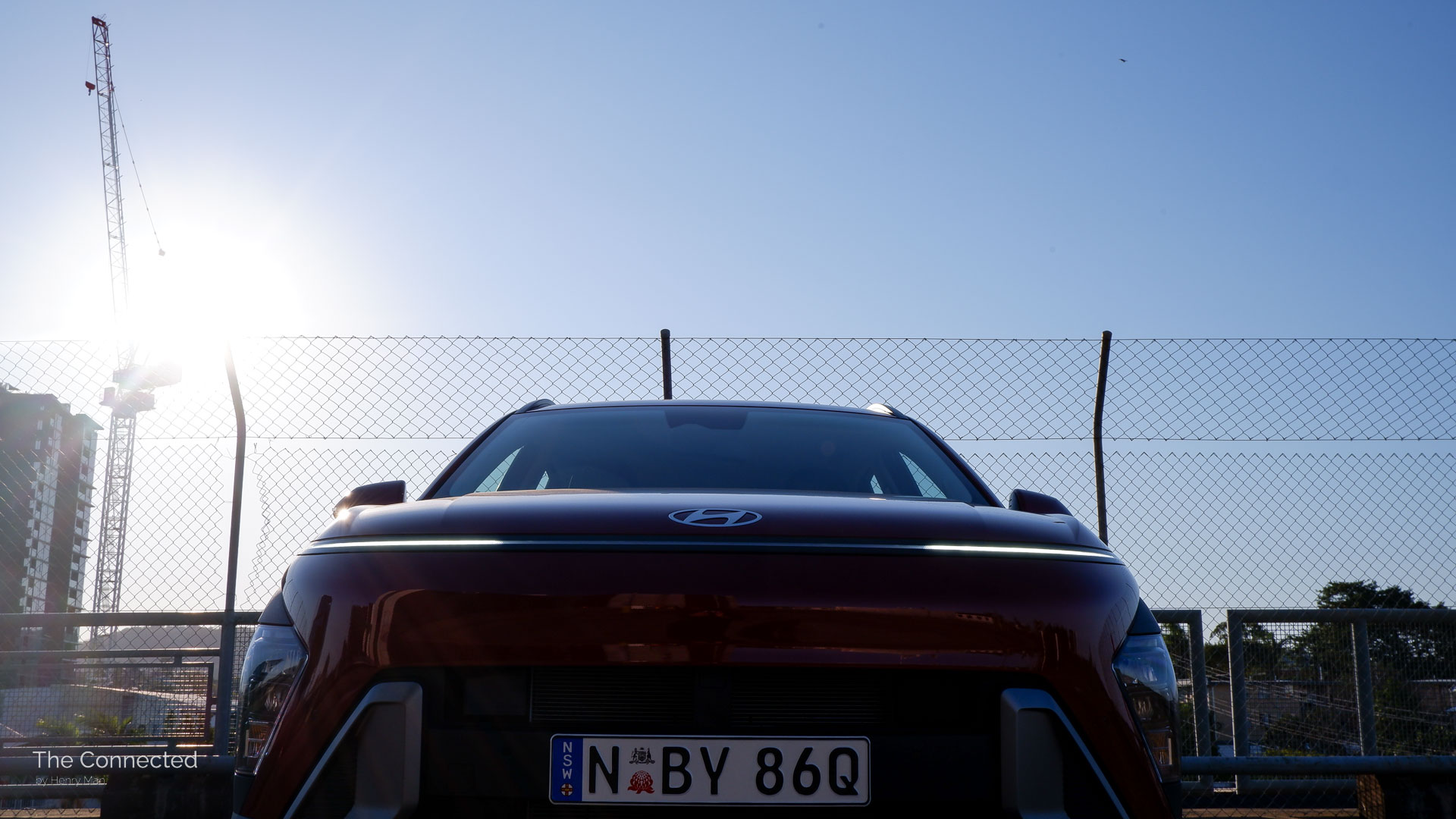
If your budget can stretch even further, the N Line Package ($4000) should also help lift up (slightly) the perceived interior quality, alongside bringing a sportier-looking exterior, full LED head- and tail-lights, full-width illuminated front light bar, automatic wipers, and a 12.3-inch driver instrument display.
However, optioning both can become quite pricey on the Premium variant and can creep into a high-spec Hyundai Tucson medium SUV. The top-spec adds niceties such as a 360-degree camera system, blind-spot view camera, heated and ventilated front leatherette seats, and an electric tailgate.
There’s a laundry list of other petrol- and electric-powered small SUV alternatives to consider and, while the Hyundai Kona is no longer available with a low-spec cheap variant due to the changing buyer trends, it still represents excellent value at the entry level.
The new Kona has grown up.
Photographs by Henry Man
READ MORE: 2024 Hyundai Kona Hybrid review: The new default.
READ MORE: 2024 Volkswagen T-Roc review: Best of VW?
READ MORE: 2024 Kia Seltos review: Now on brand.
About the Author.
Henry Man is an independent content producer passionate about the intersection of technology and transportation.
The former automotive journalist is committed to critically detailed vehicle reviews, balanced reporting, and producing content in the public interest.
The Connected represents an altruistic and truly independent initiative to publish content without commercial conflict-of-interests. Learn more.
